Introduction
Cloud automation is revolutionizing the way organizations operate in the digital landscape, offering enhanced efficiency, scalability, and business agility. By automating routine tasks within cloud environments, companies can boost IT productivity, drive innovation, and leverage advanced technologies like generative AI. This strategic application of automation is crucial for maintaining a competitive edge and maximizing return on investment in cloud technologies.
However, not all enterprises have embraced these advantages, with barriers such as skills gaps, technological limitations, and cybersecurity concerns hindering widespread adoption. In this article, we will explore the key benefits of automation for cloud computing, including improved efficiency and productivity, scalability and flexibility, cost reduction and resource optimization, enhanced reliability and consistency, and heightened security and compliance. We will also discuss important tools and technologies in cloud automation, best practices for implementation, and common challenges and solutions.
By understanding the future of automation and its impact on business, organizations can effectively navigate the landscape of digital transformation and drive their agile transformation efforts with confidence.
What is Automation for Cloud Computing?
Cloud automation is a transformative force, enabling organizations to elevate their operational efficiency, scalability, and business agility through the streamlining of tasks within cloud environments. By automating routine and manual processes, companies unlock the potential to enhance IT productivity, spur business innovation, and leverage advanced technologies such as generative AI.
Harnessing the power of cloud automation, IT and software development companies manage dynamic workloads and support continuous integration and deployment (CI/CD) pipelines more effectively. This capability to efficiently allocate resources is crucial in maintaining a competitive edge, as illustrated by the successful implementation of Harness Cloud Cost Management by Quizlet. Their approach to automation for cost savings demonstrates the tangible benefits of a well-executed strategy.
The strategic application of automation also expands across industries, with retail businesses harnessing cloud capabilities to handle fluctuating online traffic. The adaptability of cloud automation ensures that organizations meet customer demands with precision and ease.
According to recent surveys, the perks of automation are widely acknowledged, with improvements in customer service (33%), revenue growth (30%), and team productivity (28%) at the forefront. However, not all enterprises have harnessed these advantages, with barriers such as a lack of automation skills (29%), technological stack limitations (28%), and cybersecurity concerns (28%) impeding enterprise-wide IT automation.
Embracing cloud automation not only streamlines operations but also provides a foundation for ingenuity and strategic thought, positioning companies to maximize their return on investment in cloud technologies. With intelligent automation, organizations can navigate the landscape of digital transformation with confidence and clear direction.
Key Benefits of Automation for Cloud Computing
Cloud automation provides a transformative approach for organizations looking to elevate their digital strategy. By streamlining IT productivity, enhancing business innovation, and leveraging advanced technologies like generative AI, cloud automation extends far beyond cost savings. Harnessing cloud automation allows for the management of dynamic workloads and supports CI/CD pipelines, ensuring resources are allocated efficiently to match fluctuating demands. Notably, industries such as IT and software development have been revolutionized by cloud-driven DevOps practices. These practices automate key stages of the software development lifecycle, fostering greater alignment with business objectives and expediting time to market.
Moreover, a key aspect of cloud automation is in cost management. For example, Quizlet, an AI-powered global learning platform, implemented Harness Cloud Cost Management to automate cost-saving processes, empowering engineers to focus on core development tasks. The strategic use of cloud automation is paramount in realizing ROI from cloud investments and in overcoming common barriers such as skill gaps and tech stack limitations.
Statistics reinforce the notion that automation, particularly when infused with AI, can significantly impact job functions by automating or altering tasks like performance monitoring and customer data collection. IT, finance, and customer sales are among the sectors poised to experience the most profound shifts in their workflow due to AI integration. Ultimately, the true value of cloud automation lies in its capacity to free up time for creative and strategic thinking, a benefit that resonates across various industries and job functions.
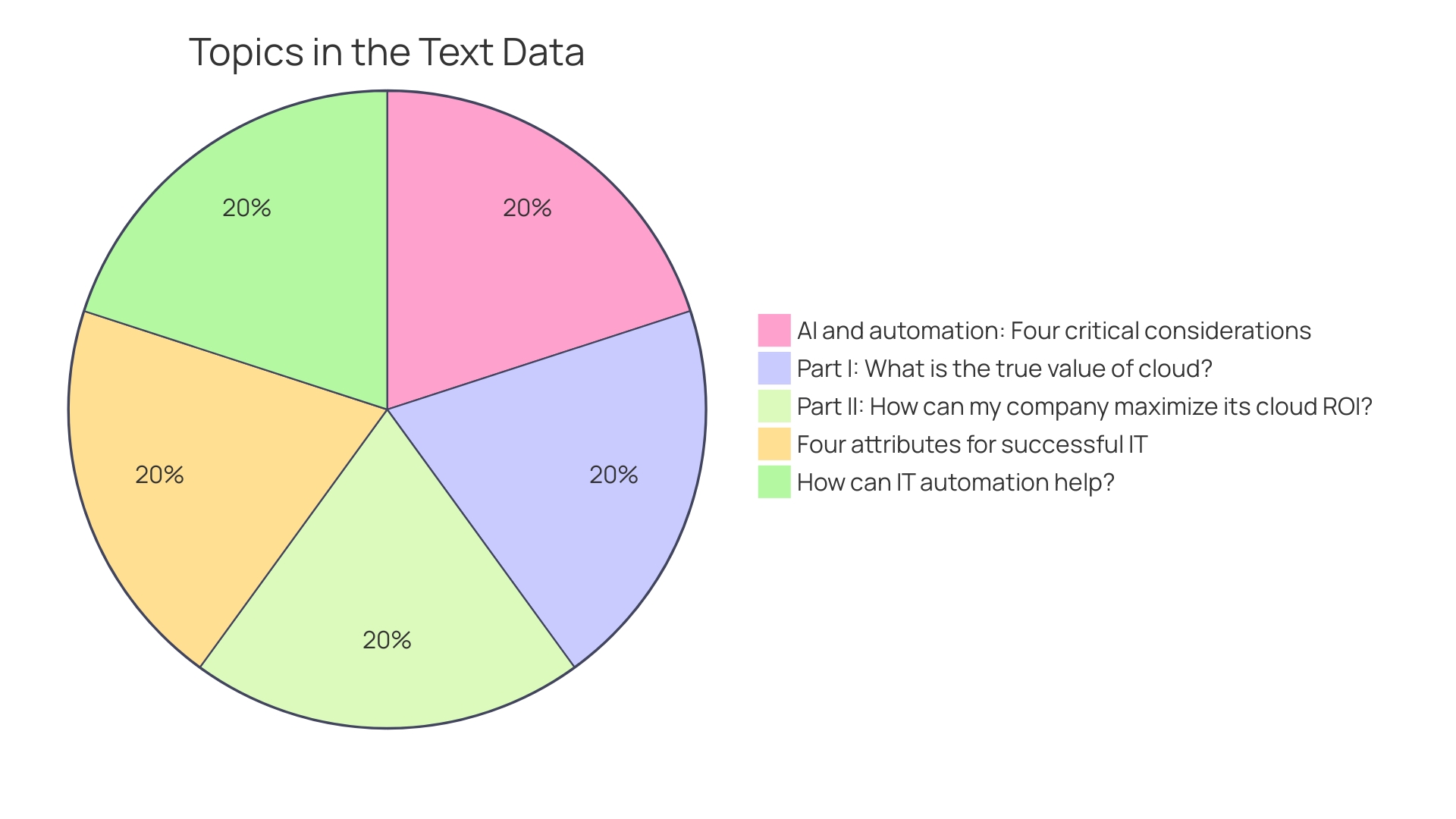
Enhanced Efficiency and Productivity
The integration of cloud automation and orchestration tools into the daily operations of an organization brings transformative advantages. By automating recurring processes, such as resource provisioning, software deployment, and system monitoring, companies are able to streamline their cloud infrastructure management. This strategic automation not only heightens efficiency by reducing manual intervention but also accelerates productivity, liberating staff to prioritize tasks that drive innovation and add significant value to the business.
As evidenced by Quizlet's experience in implementing Harness Cloud Cost Management, automation of cost-saving measures directly impacts operational effectiveness. By simplifying the process for engineers to engage with cost-saving actions through an automated workflow, Quizlet saw a marked increase in adherence to cost optimization recommendations. Similarly, Delivery Hero tackled the challenge of frequent account lockouts by automating the recovery process, slashing the average resolution time and enhancing overall employee productivity.
The evolution of DevOps has been instrumental in this shift towards automated efficiency. Key practices such as continuous integration and deployment, infrastructure as code, and proactive monitoring have minimized overhead and accelerated market delivery times. As organizations like Quizlet and Delivery Hero demonstrate, the right automation strategy can substantially impact the foundational attributes of successful IT: speed, efficiency, risk mitigation, and improved workflows.
Reflecting on the broader data center industry and advancements in AI, it's clear that automation is a cornerstone for future-proofing enterprises. The ability to automate not only saves time but also redefines roles within an organization, allowing teams to focus on enhancing the very automation that propels their success. With the right tools and approaches, the virtuous cycle of improvement in one area positively influencing others becomes a tangible reality for businesses committed to agile transformation.
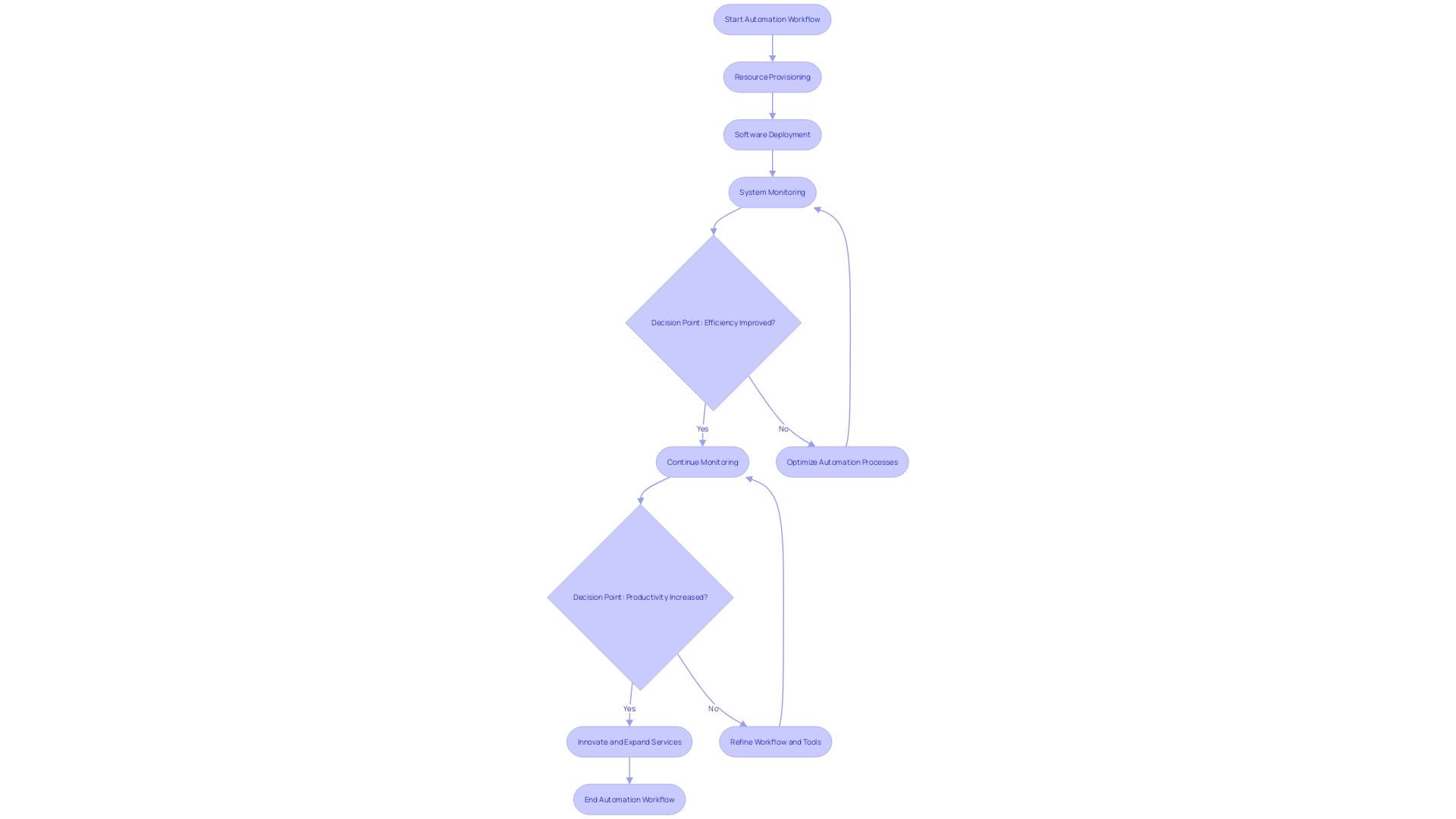
Scalability and Flexibility
Harnessing the power of automation in cloud environments empowers businesses to adeptly navigate the ebb and flow of demand. Through the strategic implementation of automated scaling, companies like Quizlet have witnessed firsthand the profound impact on resource management. Quizlet's journey with Terraform and Harness Cloud Cost Management illustrates how automation transcends mere cost savings; it's about cultivating a nimble infrastructure that adapts in real-time, ensuring resources are precisely calibrated to current needs. This is not just about keeping pace, but about elevating performance while concurrently optimizing expenditures.
In the dynamic realm of cloud resources, the allure of hypergrowth can entice startups to scale precipitously, often leading to overprovisioning and unnecessary complexity. The solution lies in a delicate balance, where growth is harmonized with intelligent resource allocation. By taking cues from Quizlet's innovative approach, businesses can avoid the pitfalls of unchecked scaling, streamline their cloud infrastructure and embrace a model that prioritizes efficiency and cost-effectiveness.
Furthermore, recent developments from Google Cloud offer the assurance of reserved capacity, enabling organizations to plan ahead with confidence. This foresight is echoed across major cloud providers, including Microsoft Azure and AWS, each offering their own flavor of resource reservation. This proactive strategy is instrumental for businesses seeking to secure the necessary capacity in anticipation of demand surges, without the risk of overcommitment.
In essence, the strategic orchestration of cloud automation and scaling is not only about adapting to immediate demands but also about future-proofing your organization's cloud infrastructure. It's a journey of continuous refinement, where the ultimate destination is a harmonious state of agility, performance, and cost management.

Cost Reduction and Resource Optimization
Harnessing cloud automation and orchestration strategies is pivotal for agile transformation, as they ensure optimal resource utilization and cost efficiency. By deploying these technologies, companies eliminate manual errors and reduce waste, thus maximizing cloud resource usage. For instance, Quizlet, a global learning platform, embraced Harness Cloud Cost Management to automate cost-saving actions. However, additional recommendations for cost savings remained unaddressed until they automated the workflow to create pull requests for the Harness recommendations, starting with microservices. Such automation is critical, especially against the backdrop of a survey showing 89% of businesses experiencing significant or moderate increases in cloud spending over the last year. Furthermore, an overwhelming 49% of IT decision-makers believe their cloud costs are higher than necessary, with only 30% having a clear understanding of their spend. Cloud optimization, familiar to 66% of respondents, emerges as a necessary strategy to combat these challenges, offering cost savings, efficiency gains, and scalability. The orchestration of cloud services must align with current business needs, as procurement is often driven by short-term requirements or market opportunities. This underscores the importance of continuous alignment between cloud services and business objectives. DigitalOcean experts further advocate for reducing cloud expenses by moving to their platform, suggesting that expert advice is a valuable resource in the pursuit of cost optimization. As businesses wrestle with escalating cloud costs, it's evident that a strategic approach to cloud automation and orchestration can significantly mitigate financial pressures while enhancing operational agility.
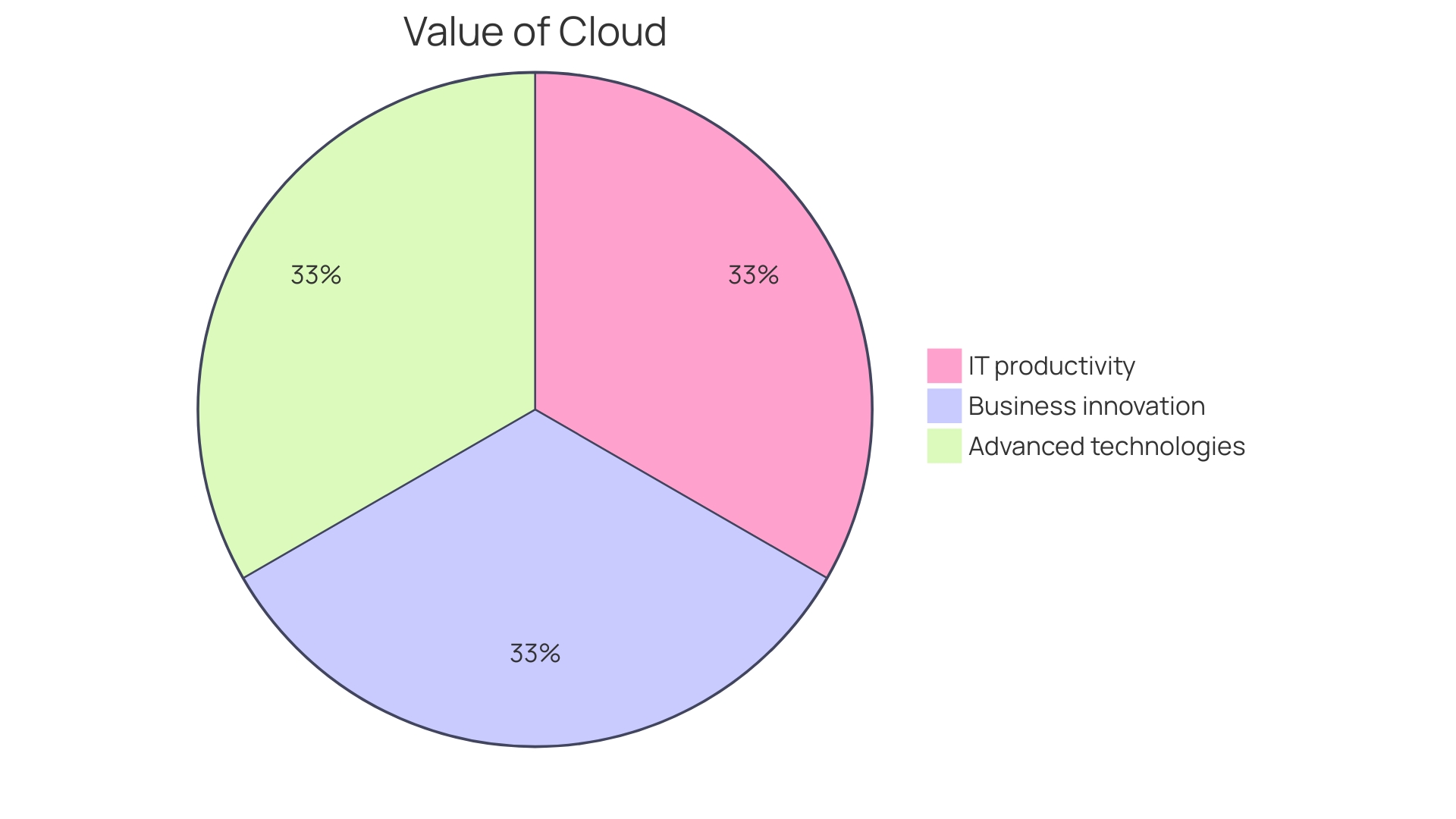
Improved Reliability and Consistency
The landscape of cloud operations is rapidly evolving, with automation playing a pivotal role in ensuring consistent and reliable outcomes. By implementing automated workflows and configurations, organizations can significantly reduce the risk of human error, which is instrumental in achieving more predictable results and bolstering system dependability. In real-world scenarios, companies like Specsavers have navigated the complexities of a global supply chain and specialized medical devices with bespoke business processes, leveraging automation to streamline operations and enhance customer experiences. Similarly, Delivery Hero tackled the challenge of frequent account lockouts by automating the recovery process, thereby improving employee productivity and reducing downtime.
Moreover, automation is not a one-size-fits-all solution but should be tailored to each organization's unique priorities and goals. For example, Hiscox, a specialist insurance company, implemented automation to manage the influx of customer emails, resulting in a 28% decrease in repetitive workload and faster response times, ultimately enhancing customer and employee satisfaction. This underscores the importance of a strategic approach to automation, as outlined by DevOps practices that encompass continuous integration, delivery, and infrastructure as code, among others.
The necessity of enterprise-wide IT automation is further supported by statistics from industry leaders like Amazon, which emphasizes designing systems for both availability and resilience. Even with a high availability rate, large-scale operations can expect some level of failure, making the ability to quickly recover and maintain service continuity crucial.
To encapsulate, automation in cloud operations is not merely a technical upgrade but a strategic imperative that aligns with the four critical attributes of successful IT: speed, efficiency, risk reduction, and skills. By adopting a comprehensive and thoughtful approach to automation, organizations can transform their technological landscape, driving innovation and maintaining a competitive edge in an ever-changing digital world.
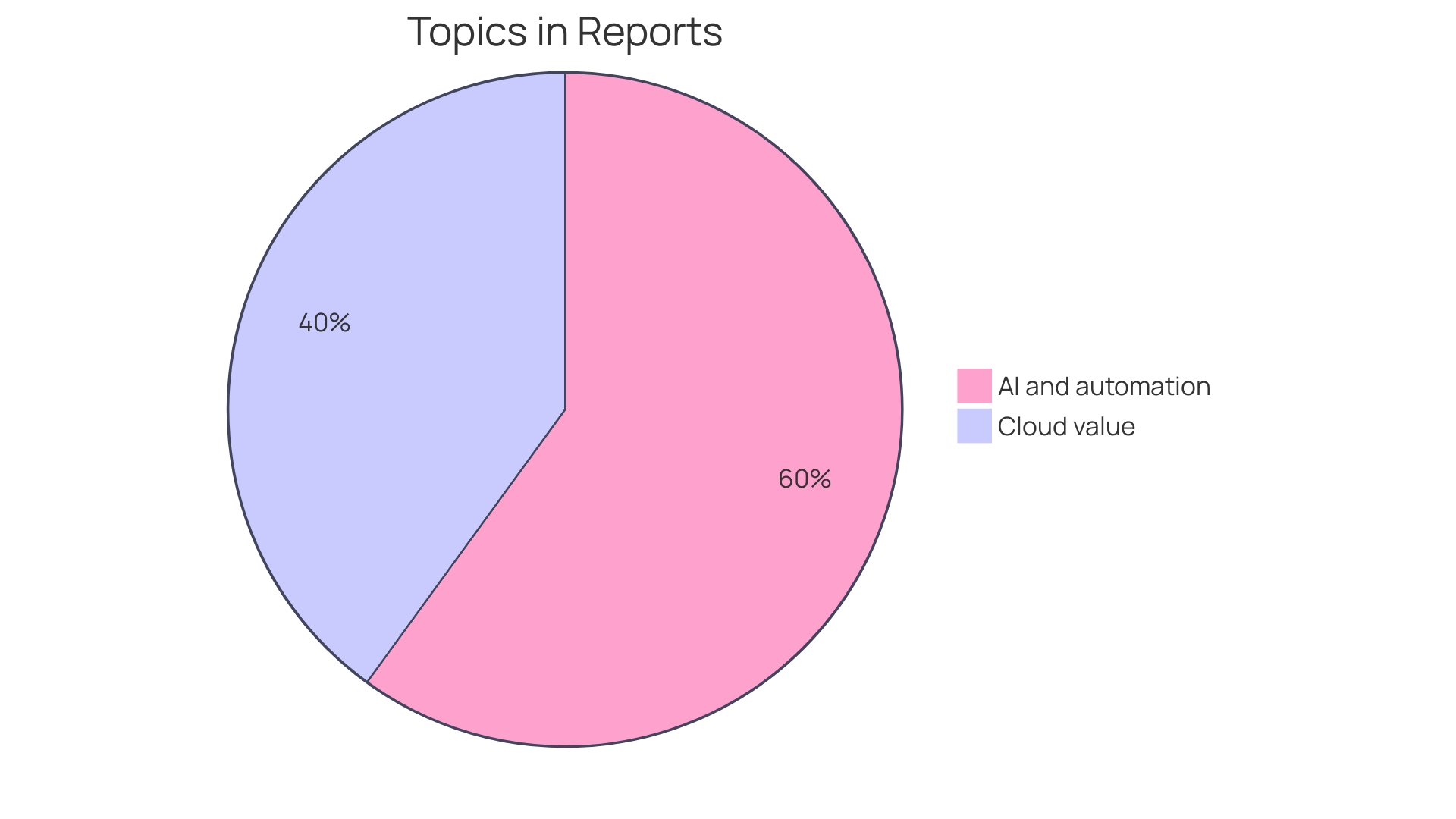
Enhanced Security and Compliance
As cloud technology becomes increasingly integral to business operations, a robust approach to cloud security and compliance is indispensable. In particular, automated security protocols play a pivotal role in preemptively identifying and neutralizing potential threats. These protocols include continuous monitoring, vulnerability scanning, and automated patch management, which collectively enable businesses to maintain a proactive security posture and adhere to industry regulations.
For instance, as organizations employ artificial intelligence (AI) and machine learning (ML) across various applications, such as customer-facing chatbots, the need for automated governance processes becomes critical. MLOps, for example, facilitates the automation of these governance processes, ensuring that ML models are thoroughly vetted for quality, bias, and compliance with organizational standards before deployment. This is essential in a landscape where a mature organization may operate numerous models simultaneously.
Recent statistics underscore the importance of automation in cloud security. According to a 2024 survey of 927 cybersecurity professionals, 78% of organizations now adopt hybrid and multi-cloud strategies, with 43% using a mix of cloud and on-premises infrastructure. Automation is not only about efficiency but also about the verifiability and reliability of security processes, which must be repetitive, algorithmically definable, and subject to validation by human oversight.
The rise of automated security measures is further illustrated by a comprehensive analysis of ninety-five billion events over a six-month period in 2023, where AI-based detection played a crucial role in identifying and analyzing malicious activity. Out of the 985,000 events flagged as alarms, only a fraction required further investigation, demonstrating the efficiency and precision that automation brings to security operations.
Moreover, with the increased complexity of network defenses and the rapid evolution of threat vectors, organizations must continually adapt their security measures. This ongoing challenge highlights the dual nature of technological advancements—they not only enhance security capabilities but also introduce new vulnerabilities.
The convergence of AI, automation, and comprehensive monitoring represents a transformative era in cloud security and compliance, one that requires organizations to reimagine their strategies to safeguard their digital assets effectively.
Important Tools and Technologies in Automation for Cloud Computing
Cloud automation and orchestration have become essential strategies for agile transformation in today's fast-paced software development world. DevOps, emerging in the late 2000s, has brought a significant mindset shift by introducing an ecosystem of tools designed for continuous improvement throughout the software development lifecycle (SDLC). Harnessing these tools, organizations like Quizlet and Delivery Hero have made notable advancements in managing cloud costs and streamlining IT processes, respectively.
At Quizlet, a global learning platform, embracing Harness Cloud Cost Management enabled the automation of cost-saving recommendations with minimal effort from engineers. By automating the creation of pull requests for these recommendations, the platform team at Quizlet illustrated how automation could empower engineers to optimize cloud costs efficiently.
Similarly, Delivery Hero, a leading local delivery platform, tackled the challenge of frequent employee lockouts, which affected productivity. By automating the account recovery process, the company significantly reduced the time employees spent locked out, demonstrating the importance of automation in maintaining operational continuity.
These case studies reflect how automation tools are critical in achieving faster delivery, improved accuracy, and alignment with business goals. Practices such as continuous integration (CI), continuous delivery (CD), infrastructure as code (IAC), and configuration management are now standard in the industry, thanks to platforms like Google Cloud Platform (GCP), which offers a comprehensive suite of cloud computing services. These services facilitate the automation of repetitive tasks, allowing teams to concentrate on strategic work, fostering innovation.
As stated in TechRepublic's report, automation's benefits extend to enhanced customer experience, increased revenue, and more productive teams. However, the adoption of automation varies, with barriers such as skill gaps, technological limitations, and cybersecurity concerns. Despite these challenges, the value of cloud adoption, including IT productivity and business innovation, is undeniable. Reports, such as those from Docker's State of Application Development survey, show that developers value tools that streamline their work, with more than 1,300 developers expressing their preferences and priorities.
In conclusion, the landscape of DevOps automation tools is continuously evolving to meet the demands of modern software development. With the right tools and technologies, organizations can not only automate their cloud operations but also unlock the full potential of their cloud investments and propel their agile transformation efforts.

Infrastructure-as-Code (IaC)
Infrastructure as Code (IAC) has evolved from a promising concept into an essential DevOps practice, streamlining the provisioning and management of cloud resources through automated scripts. The transformative power of IAC lies in its ability to make infrastructure provisioning consistent and reproducible. By defining system architecture in code, organizations are able to store, version, and track changes, minimizing human error and simplifying rollback processes when necessary. This practice ensures a stable and efficient deployment process, which is crucial for organizations scaling rapidly, like one that transitioned to Terraform in 2017 to manage its growing infrastructure demands.
IaC's significance is further underscored by its adoption in projects that require high efficiency and sustainability, such as Bosch's solid oxide fuel cell system. The digital twin supporting the SOFC system exemplifies the integration of IAC in managing and optimizing complex infrastructures over their lifetimes. Similarly, IFCO's partnership with Rackspace Technology highlights the reliance on IAC to harness cloud capabilities effectively, even for teams with limited IT resources.
The adoption of IaC is not just a trend but a strategic move aligned with the four core values of DevOps: Culture, Automation, Measurement, and Sharing. It marks a departure from pre-IAC architecture, enabling rapid, flexible, and consistent workflows. As industry leaders emphasize the need for rapid prototyping and swift delivery, IAC becomes indispensable, offering a level of agility that keeps companies competitive. Such strategic advantages are echoed in recent reports, emphasizing the substantial value IAC brings to IT productivity, business innovation, and the adoption of advanced technologies like generative AI, which further expand the potential of cloud infrastructure.
Orchestration Tools
Selecting an optimal cloud orchestration tool parallels the meticulous composition of a symphony. Just as each instrument contributes to the ensemble's harmony, so does each system, database, and application within an organization's digital ecosystem. The strategic integration of these components is pivotal to developing a coherent, data-driven business landscape. Within this complex domain, data orchestration tools emerge as conductors, effortlessly navigating the intricacies of disparate data sources to forge a unified operational vision.
In the realm of data orchestration, one must navigate a labyrinth of choices, where the decision is seldom clear-cut. With a plethora of platforms available, discernment becomes critical, given the diversity of terminologies and capabilities. Prospective tools should not only align with current infrastructural needs but also demonstrate scalability and cost-effectiveness over time. For instance, Airbnb's Airflow, developed under the Apache Software Foundation since 2014, stands out for its maturity and broad adoption. It boasts a versatile framework capable of integrating with languages such as Python, Spark, Bash, and SQL, supported by an intuitive web UI for process organization and monitoring.
The journey towards selecting a data orchestration solution is further complicated when considering the varying learning curves and how these tools can be extended or hosted. A comprehensive evaluation must include the examination of top-tier platforms, dissecting their features, advantages, drawbacks, and financial implications. This scrutiny is essential for businesses, especially large enterprises contending with data sprawl across multiple storage locations, seeking to unify their information within a centralized repository like Snowflake or Google BigQuery.
In conclusion, as organizations evolve in their data management strategies, the harmonious integration of cloud services, such as those offered by Google Cloud Platform, becomes increasingly essential. By implementing the right orchestration tools, businesses can bolster their agility, ensuring that their technological symphony resonates with precision and efficiency.
Configuration Management Tools
Embracing cloud automation and orchestration strategies is vital for achieving agility and efficiency in today's dynamic IT landscapes. Configuration management tools are at the forefront of this transformation, offering a systematic approach to managing and streamlining the configuration of cloud-based infrastructure. With these tools, businesses can ensure that their cloud environments remain consistent, compliant, and aligned with industry best practices.
As organizations grow and scale, manual provisioning and configuration quickly become unsustainable. This was evident in the case of Terraform's journey to define Infrastructure as Code (IAC), which enabled them to transition from labor-intensive manual tasks to a scalable, automated infrastructure management process. Similarly, a project that aimed to simplify the updating process for Linux distributions through a Nexus repository exemplifies the importance of a well-thought-out automation strategy that begins with a clear end goal.
The need for such strategic automation is underscored by a recent survey by Cisco and the Enterprise Strategy Group, which highlights the pressing need for organizations to integrate security into their cloud-native application development from the onset. Additionally, the Linux Foundation Research's survey, encompassing responses from a wide range of industries, demonstrates a growing adoption of cloud-native practices and the critical role of automation in maintaining a competitive edge.
In line with these findings, it's imperative for organizations to avoid fragmented efforts by setting clear targets and understanding the unique challenges they face when implementing cloud automation and DevOps practices. This comprehensive approach not only fosters a culture of continuous improvement but also ensures that cost management and resource optimization are seamlessly integrated into the cloud services lifecycle, as demonstrated by Quizlet's successful implementation of Harness Cloud Cost Management.
Moreover, the push towards sustainable cloud solutions aligns with this strategy, as cloud service providers increasingly adopt green computing practices. These practices are not only a response to consumer demand and regulatory pressures but also contribute to the strategic necessity for businesses to minimize the environmental impact of their cloud operations.
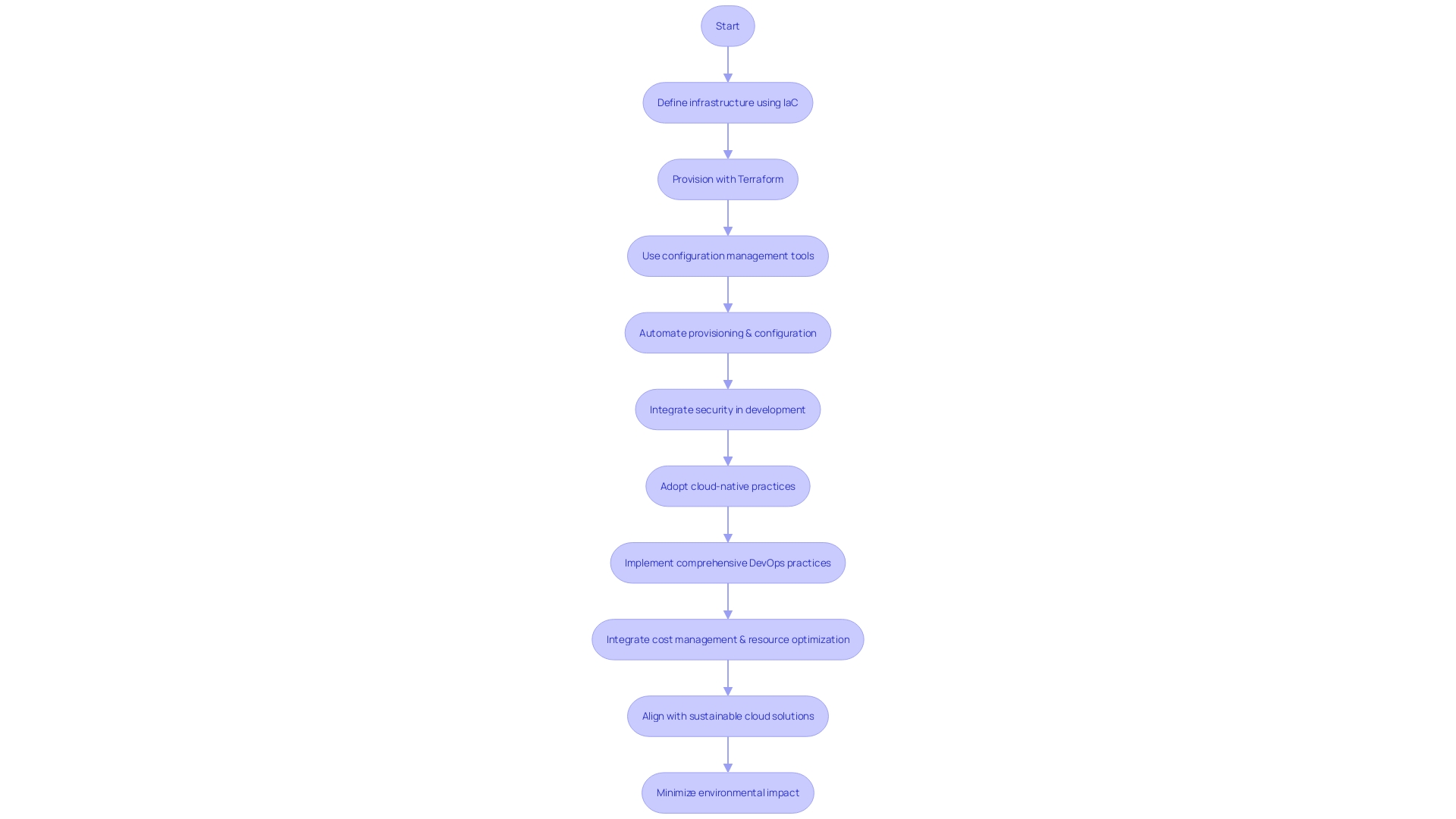
Monitoring and Management Platforms
As organizations continue to grow, the scalability and reliability of their digital infrastructure are paramount. This is illustrated by the case of 20 Minutes, a French news publisher that began as a daily newspaper and expanded into a significant digital presence. With over 20 million monthly users, their journey from a traditional on-premise architecture to a more dynamic cloud-based system underscores the importance of robust cloud management tools.
These tools are not just for large organizations; they are crucial for any business seeking to optimize their cloud architecture. For instance, a survey of IT decision-makers revealed that 66% are familiar with cloud optimization, with 89% reporting an increase in cloud spending, indicating a broad awareness of the need to efficiently manage cloud resources.
Moreover, cloud optimization is not solely about cost management. It also encompasses performance and reliability, as highlighted by a Cloud SRE's perspective on the criticality of proactive monitoring for maintaining the health of cloud infrastructure. The use of synthetic monitoring, where pre-scripted scenarios are employed to simulate user interactions, provides valuable insights into system performance.
A notable example comes from Quizlet, where the implementation of Harness Cloud Cost Management led to the automation of cost-saving actions. By simplifying the process for engineers, they could address recommendations with minimal effort, demonstrating the tangible benefits of automated cloud management.
In light of these insights, it's clear that automated cloud platforms, offering monitoring, alerting, and management capabilities, are essential. They allow organizations to proactively resolve issues, ensuring their digital platforms remain robust and responsive. With the right strategies and tools, companies can achieve agility, reduce costs, and enhance the reliability of their cloud resources, paving the way for sustained growth and innovation.
Implementing Automation for Cloud Computing: A Step-by-Step Guide
The journey to cloud automation and orchestration is a critical step for organizations aiming to achieve agile transformation. By automating cloud operations, companies like Quizlet have seen significant improvements in managing cloud costs and streamlining engineering workflows. For instance, Quizlet, a global learning platform, tackled the challenge of unaddressed cost-saving recommendations by creating an automated workflow that generated pull requests based on Harness Cloud Cost Management suggestions, starting with their microservices. Similarly, the massive chess platform Chess.com harnesses cloud automation to support over ten million games daily, reflecting their mission to foster connections through chess on a global scale.
Experts note that Google Cloud Platform (GCP) is a comprehensive suite of cloud services that enables businesses to build sophisticated digital infrastructures. With offerings in artificial intelligence, machine learning, and a host of developer tools, GCP is known for its innovation and global accessibility. This demonstrates the importance of choosing the right tools and strategies to manage cloud costs and operations effectively.
However, the implementation of these strategies does not come without challenges. The lack of a comprehensive strategy can lead to fragmented efforts, and a TechRepublic report highlighted that 82% of organizations have not achieved enterprise-wide IT automation. Common barriers include skill gaps, limitations in the tech stack, and cybersecurity concerns.
To maximize cloud ROI, it's crucial to understand the value cloud offers in areas like IT productivity and business innovation. As per a recent report, organizations can balance cloud investments against expected benefits, including leveraging advanced technologies such as generative AI to enhance cloud value.
The insights from more than 1,300 developers in the Docker State of Application Development survey underscore the importance of tools in the application development process. With a range of respondents from hobbyists to professionals at large companies, the survey findings emphasize developers' focus on tools that support their work and the importance of community involvement in shaping these tools.
For organizations embarking on cloud automation, these insights and case studies serve as a foundation for planning and executing a strategy that aligns with their specific needs and challenges, thereby paving the way for an agile transformation supported by robust cloud automation practices.
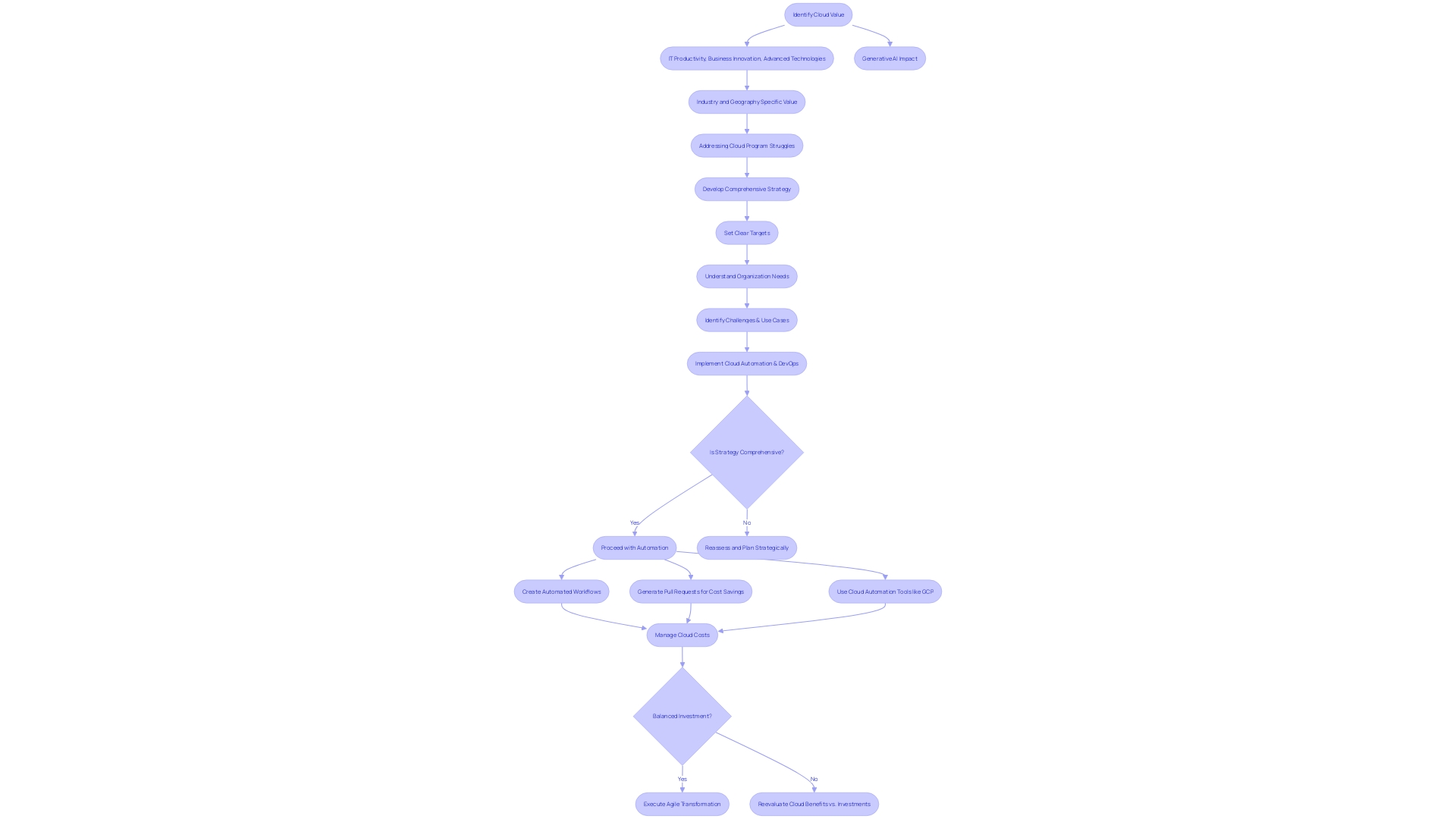
Assessment and Planning
To effectively enhance your cloud infrastructure, begin with a comprehensive evaluation, pinpointing potential areas ripe for automation. Drawing on insights from industry experts like David S. Linthicum, who emphasizes the significance of a cloud-native approach, consider the full spectrum of cloud benefits - from cost efficiency to scalability and security. Harnessing the power of automation not only streamlines operations but also fosters an environment conducive to innovation.
Leverage case studies, such as Quizlet's integration of Harness Cloud Cost Management, to inform your automation strategy. By automating workflows for cost-saving recommendations, Quizlet empowered their engineers, illustrating the practicality of cloud automation in reducing manual tasks and optimizing resource utilization.
In line with the four key IT attributes - speed, efficiency, risk mitigation, and skill development - prioritize your automation initiatives. Incorporate strategies from IFCO's collaboration with Rackspace for expert guidance and customer-focused solutions, ensuring your roadmap aligns with business objectives and maximizes cloud ROI, as highlighted in the two-part report on cloud value and ROI optimization.
By embracing this strategic approach, supported by real-world examples and authoritative insights, you'll be well-equipped to drive your organization's agile transformation through cloud automation and orchestration.
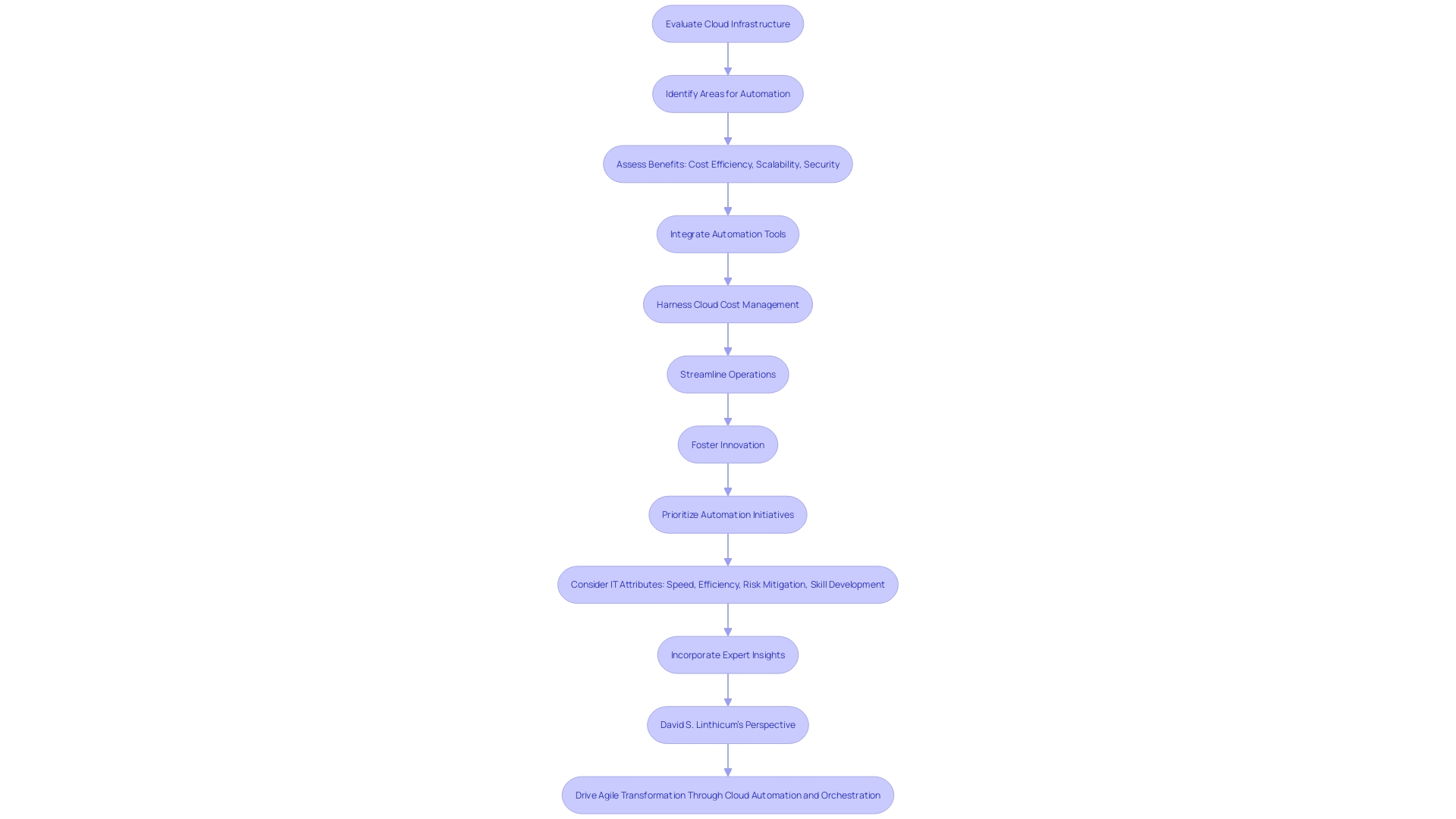
Tool Selection and Integration
The orchestration of cloud automation tools and technologies is a pivotal step towards achieving a company's strategic goals. A case in point is Bosch's implementation of its solid oxide fuel cell (SOFC) system supported by a digital twin, which exemplifies the profound impact of selecting the right technologies that align with business objectives, such as sustainability. Similarly, Satyendra Kumar's approach to IT transition, which incorporated a multiprovider, multipartner strategy and a comprehensive playbook, demonstrates the significance of collaboration and tailored strategies in technology integration.
In the realm of cloud automation, DevOps has ushered in an automation ecosystem vital for continuous improvement in software development. By automating SDLC stages, organizations like Bosch have seen faster delivery and improved accuracy, aligning with their sustainability goals. Moreover, the collaboration with Microsoft and Rackspace Technology, as seen in IFCO's cloud adoption story, underscores the importance of seamless integration with trusted platforms.
The selection of automation tools should also consider the attributes of speed, efficiency, risk reduction, and skill enhancement. For instance, the adoption of AI-enhanced automation products by Automation Anywhere has led to a 35% year-on-year increase in the dollar value of large deals, showcasing how the right tools can drive profitability and business transformation.
Furthermore, the increasing use of IoT and automated systems in research labs has resulted in a market growth from $5.1 billion in 2022 to an anticipated $7.1 billion by 2028, reflecting the escalating demand for efficient and integrated automation solutions. These tools not only streamline operations but also foster innovation, as evidenced by the enhanced productivity and performance in labs.
Finally, the significance of data cannot be overstated. As articulated by industry experts, the three main components of AI—computing power, data, and algorithms—are optimally delivered through cloud services. This cloud-native approach offers cost savings, flexibility, scalability, enhanced security, and disaster recovery, all of which are crucial for businesses to thrive in today's competitive landscape.
In conclusion, the choice of automation tools and technologies is not a one-size-fits-all decision. It must be informed by a company's unique needs, existing infrastructure, and long-term objectives to ensure a transformative impact on operational efficiency and business agility.
Designing Automated Workflows
Crafting an automated workflow necessitates a deep understanding of your company's specific processes and objectives. It is essential to construct a workflow diagram that delineates each task's sequence, interdependencies, and critical decision junctures. This diagram serves as a blueprint, guiding the flow of tasks and ensuring alignment with organizational goals. Such visual tools not only clarify roles and responsibilities for team members but also highlight potential areas for efficiency gains. By leveraging workflow automation technology, businesses can minimize manual tasks, reduce errors, and enhance overall operational efficiency. This approach also allows for the seamless integration of digital technologies into existing business processes, which is a vital component of digital transformation. In the realm of digital transformation, organizations transition through digitization, digitalization, and ultimately, the transformative stage where data and technology are harmonized to unlock new value. Workflow automation is an integral part of this journey, providing a structured mechanism for orchestrating work and enabling teams to concentrate on high-value activities.
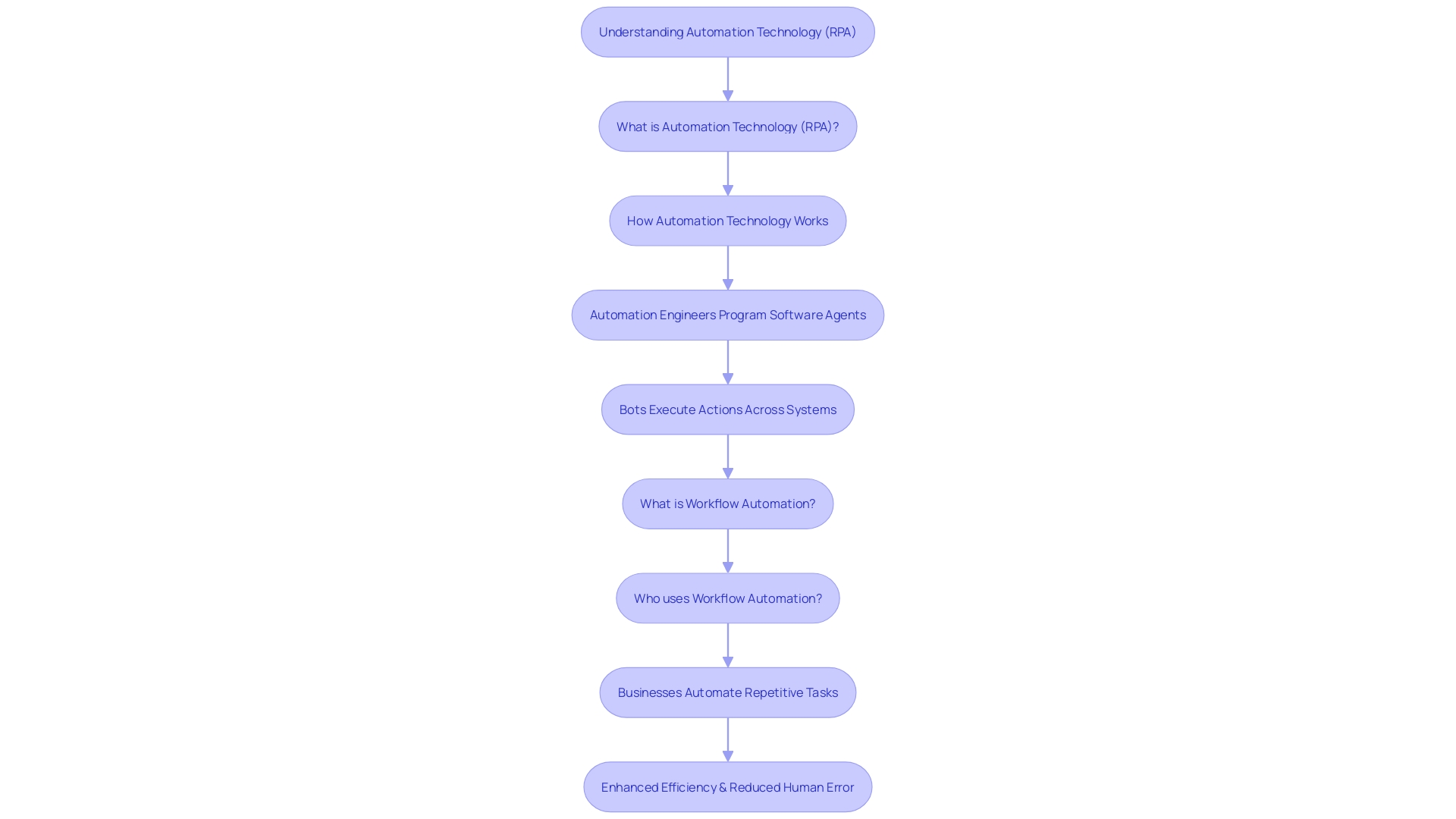
Testing and Validation
Ensuring the robustness of your automated workflows is critical in today's technology-driven landscape. The rapid development of software and the complexity of systems necessitate a meticulous assessment to confirm that these automated processes perform flawlessly. Automated testing, especially for repetitive and demanding tasks like regression, performance, and load testing, is a cornerstone for maintaining software quality. With the Automation Testing Market size projected to reach USD 89.81 billion by 2030, it's evident that more organizations are recognizing the value of test automation in quality assurance. This growth is indicative of a broader trend where software testing transcends its traditional role as a cost center, evolving into a strategic function that offers significant returns on investment through efficiency and reliability.
Test automation is not just about maintaining quality; it's also about embracing best practices that contribute to software that is Findable, Accessible, Interoperable, and Reusable (FAIR). Despite the availability of guidelines for making software FAIR, adoption has been slow due to the burden placed on developers. Automated tools that streamline the adoption of FAIR protocols are likely to gain traction, as they offer minimal effort for maximal reward. This shift is critical in fields like bioinformatics, where between 68 and 70% of resources are not used beyond their initial publication, often due to issues like insufficient documentation and discontinued maintenance.
The importance of rigorous testing is further underscored by the reality of a competitive market where customers are faced with abundant choices. Software must not only address user needs but also do so reliably to stand out. As organizations strive to answer why their product should be chosen over competitors', the answer increasingly lies in the assurance of quality through comprehensive testing strategies.
In summary, rigorous validation and testing of automated workflows are indispensable in an environment where quality and performance are paramount. By leveraging test automation, organizations can ensure their software meets the highest standards, contributing to the overall agility and transformation of their technological landscape.
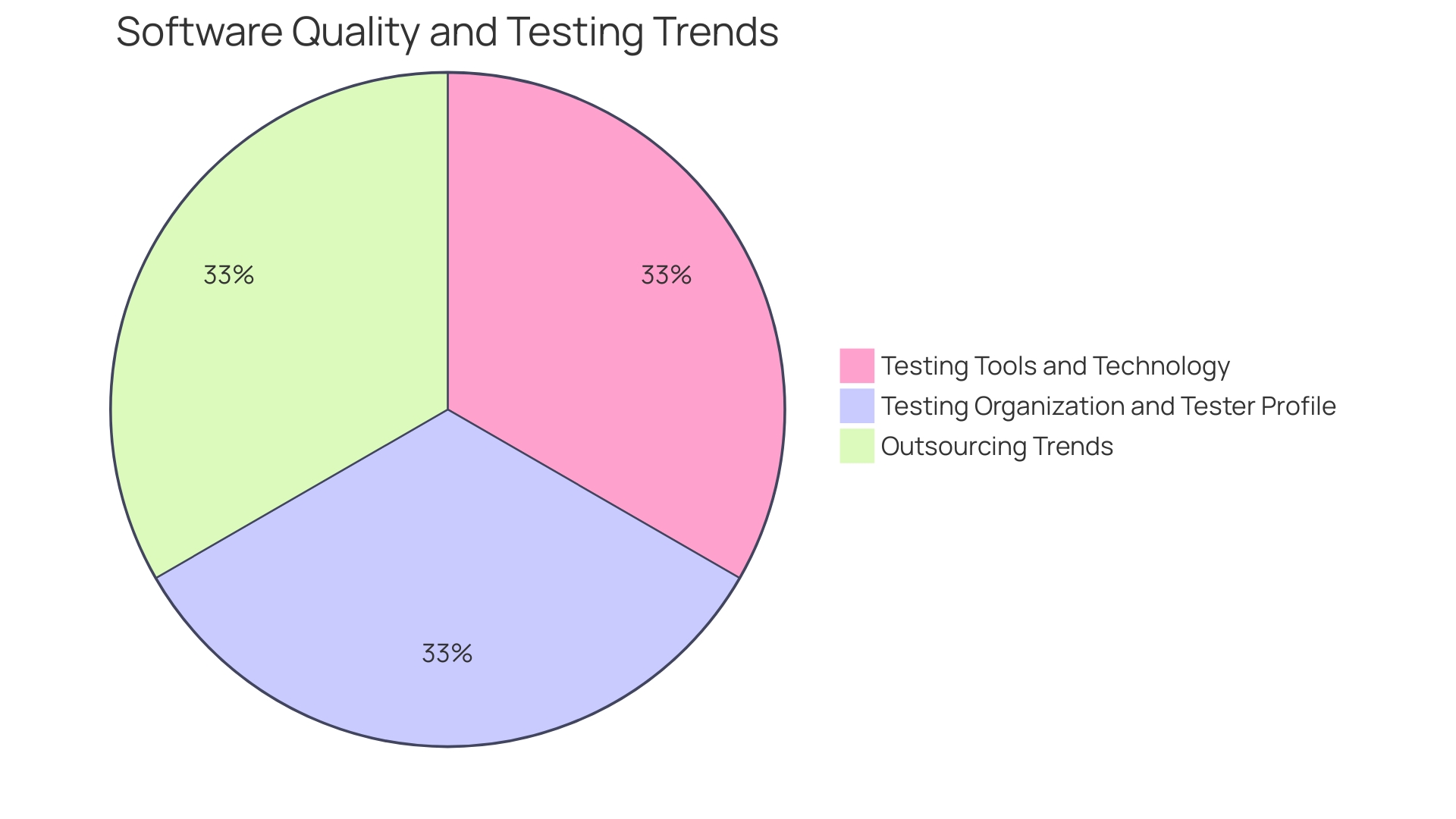
Deployment and Monitoring
When deploying automated workflows, it's crucial to not only focus on the initial launch but to also actively monitor their performance in production. By keeping an eye on key metrics, you can gather actionable insights and feedback that are essential for fine-tuning your processes. This continuous improvement loop is exemplified by the Department of Electronic & Electrical Engineering at the Faculty of Engineering and Design, where personal tutor meetings provide a platform for students to discuss issues, allowing for ongoing adjustments to the educational experience.
Similarly, companies like Delivery Hero confront the practical challenges of large-scale operations, such as account lockouts affecting workflow efficiency. By automating the account recovery process, they've significantly reduced downtime and streamlined employee productivity, demonstrating the tangible benefits of workflow automation in action.
Hiscox, a specialist insurance company, also turned to automation to manage the increasing volume of client emails—cutting down the repetitive workload by 28% and improving response times, which is crucial in an industry where customer satisfaction is paramount.
As we venture into the realm of workflow automation, it's essential to understand the technologies involved. Apache Kafka, as discussed on the HubSpot Engineering Blog, is a messaging system that's integral for asynchronous processing, enabling decoupling between action triggers and execution components. However, it also brings challenges like consumer lag that must be carefully managed to maintain near real-time processing.
Siemens Digital Industries exemplifies the integration of cutting-edge technologies in the digital transformation journey, optimizing processes and productivity across various industries. These examples, coupled with insights from industry leaders like Natan Yellin, who critiques the traditional 'You Build It, You Run It' philosophy, underscore the importance of developer involvement in production operations.
Finally, embracing digital transformation is a multi-stage endeavor—starting from digitization to digital transformation. Each step, as clarified by industry statistics, builds upon the previous one, ensuring that technology is at the core of process execution and allowing humans to contribute their high-value expertise.
In conclusion, the key to successful workflow automation lies in its continuous monitoring and improvement. By learning from real-world applications and industry innovations, organizations can refine their automated systems to better align with their strategic goals and enhance overall efficiency.
Best Practices for Automation in Cloud Computing
When harnessing the power of cloud automation, it's essential to understand that its true value lies in enhancing IT productivity, driving business innovation, and exploiting advanced technologies such as generative AI. To achieve this, organizations need to balance their cloud investments with the anticipated benefits. For instance, a report suggests that by focusing on data preparedness, human talent, IT opportunities, and investment priorities, businesses can formulate a robust strategy for intelligent automation. Furthermore, DevOps principles advocate the automation of the software development lifecycle (SDLC) stages, which includes practices like continuous integration and deployment, infrastructure as code, and proactive monitoring, all of which contribute to accelerated delivery and precision in alignment with business objectives.
Optimizing cloud ROI involves scrutinizing the impact of cloud adoption across various industries and understanding the challenges that impede cloud program success. For example, Quizlet, a global learning platform, utilized Harness Cloud Cost Management to automate cost-saving features but realized that to effectively manage cloud costs and implement savings recommendations, it was crucial to simplify processes for engineers.
Additionally, the integration of automation tools within the DevOps ecosystem has significantly shifted the software development paradigm towards continuous improvement. This ecosystem of tools assists organizations in reducing overhead and enhancing time-to-market efficiency.
As businesses navigate cloud automation, they often encounter common barriers such as skill gaps, technology stack limitations, and cybersecurity concerns. However, by questioning every requirement and understanding the direct source of each, organizations can address these challenges effectively, as highlighted by the management approach of Elon Musk.
In conclusion, enterprise-wide automation doesn't necessarily mean automating all processes but rather focusing on the most valuable ones. This strategic approach to IT automation can significantly impact speed, efficiency, risk reduction, and skill development within an organization.
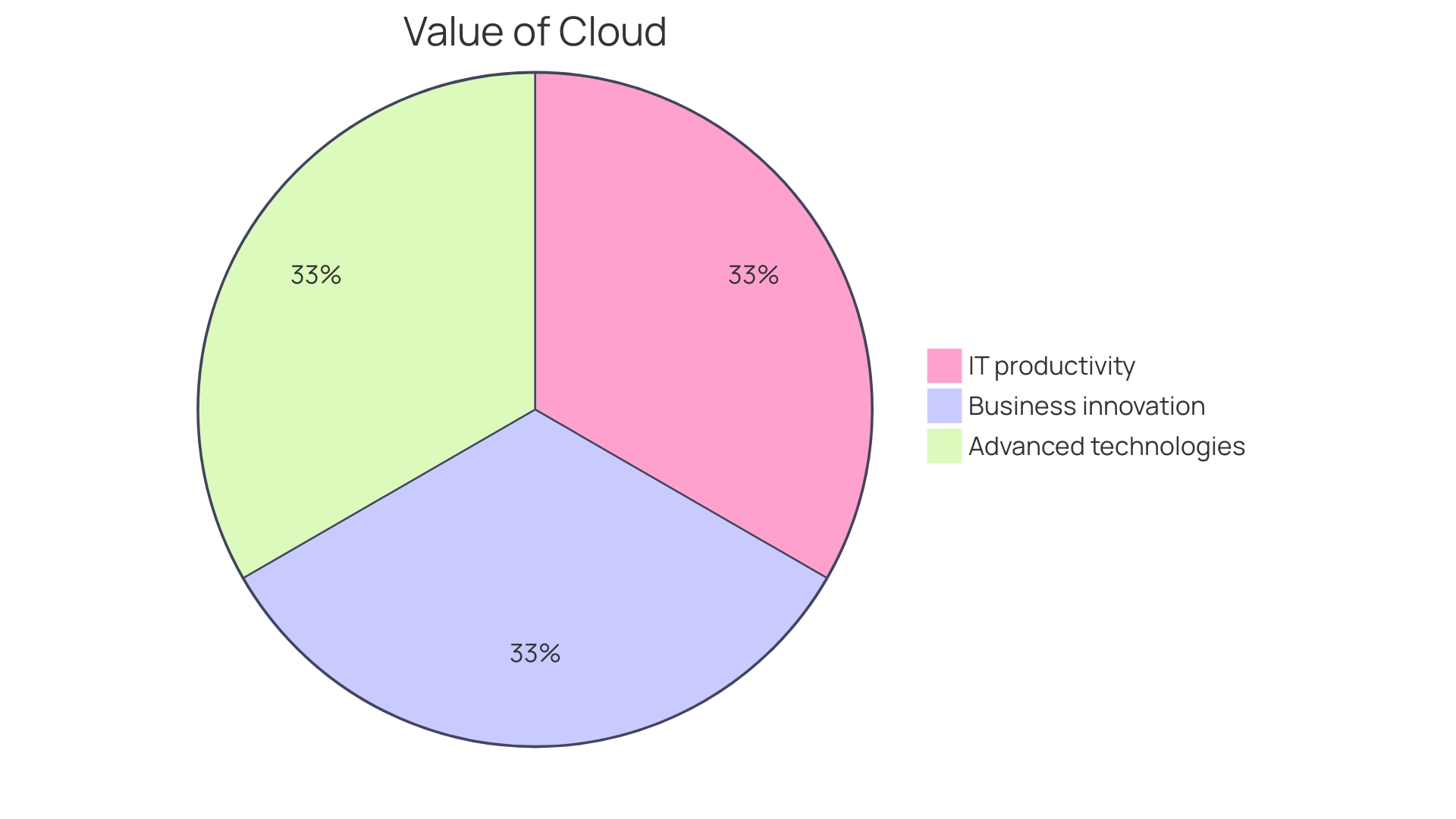
Start Small and Iterate
When considering the deployment of cloud automation and orchestration strategies for agile transformation, starting small can yield significant benefits. For instance, the AI assistant Lindy exemplifies the practicality of beginning with manageable tasks. Lindy was designed to automate a diverse array of operations, from medical scribing to customer support, all initiated by simple user prompts. The challenge, however, was integrating a vast network of apps and services to facilitate effective task execution by the AI assistants. The scale of these integrations could have necessitated an entire year of development, potentially postponing Lindy's market debut or curtailing its task offerings.
Similarly, 'Summer Health' showcases the efficacy of targeted automation in improving pediatric care through text messaging services. By automating the creation of medical visit notes, a task that consumes over half of a clinician's time, pediatricians can focus more on patient care instead of administrative duties, thereby reducing burnout.
These examples underline the importance of strategically scaling automation efforts. By automating less complex tasks initially, organizations can better manage the workflows and troubleshoot more effectively. As the automation scales, insights from the 'State of the Automation Professional Report' suggest that job satisfaction among developers and automation professionals can rise, provided there are opportunities for learning and career advancement.
Furthermore, the principles of questioning every requirement, as emphasized in the Musk manufacturing algorithm, apply here as well. Challenging the necessity of each step in the automation process ensures that only value-adding tasks are automated. This disciplined approach aligns with the broader goal of growing a business through strategic automation, as it reserves human capital for tasks that cannot be technologically replicated.
Statistics from the analysis of around 30,000 developers' pull requests reveal that the size of the PR correlates with lead time, comments received, and change failure rates. This data-driven approach to automation exemplifies how businesses can find an optimal balance when scaling automation initiatives. In summary, informed and methodical automation, starting with simpler tasks and scaling responsibly, can significantly contribute to the agility and growth of an organization.
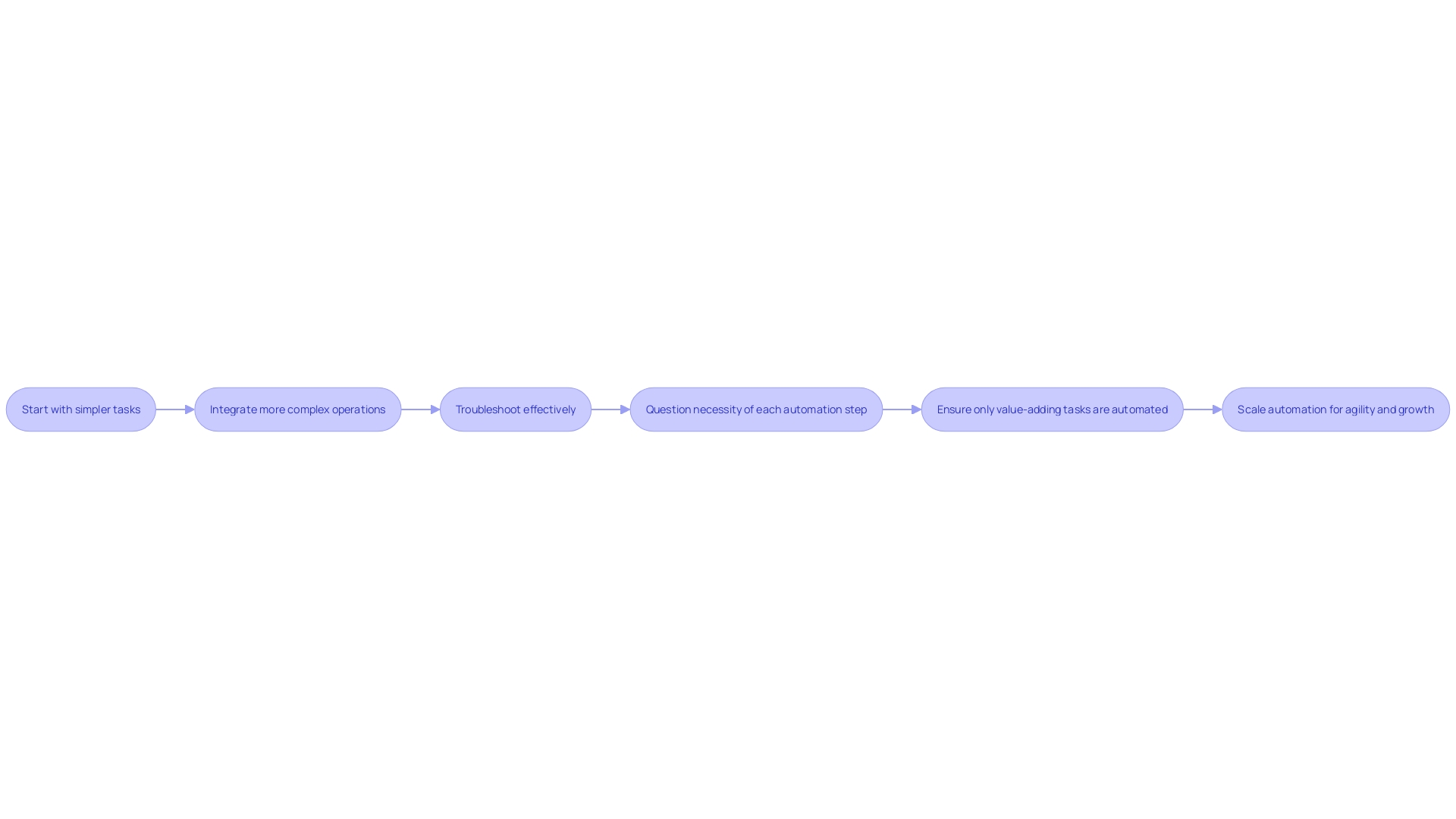
Collaborate Across Teams
The convergence of IT, operations, and development teams is not just a matter of logistics but the embodiment of an effective 'operating system' within an organization. This concept revolves around the foundational elements that enable teams to collaborate, drive change, and provide mutual support. Embedding a culture of continuous improvement, these operating systems are designed to foster value creation and define clear roles, technical skills, and processes that guide collaborative efforts. However, they remain adaptable to the evolving landscape of business priorities and technological advancements.
Take, for instance, the transformation journey of a Latin American bank embarking on a digital strategy overhaul. Initially, the absence of clear roles and collaboration led to frustration and inefficiency, despite the long hours invested by the team. It highlights the necessity for structured yet flexible operating systems that clarify expectations and responsibilities across various stakeholders. These systems should not be restricted to a single department; they must permeate the entire organization, promoting a continuous improvement mindset.
In support of this approach, the latest survey results from automation professionals reveal that job satisfaction is significantly influenced by the clarity of roles and the availability of learning opportunities. The survey, which included responses from 1,909 participants, underscores the importance of nurturing automation expertise within the workforce, including up-and-coming students. As a result, organizations are encouraged to cultivate an environment where automation professionals can thrive, underscored by community events, developmental programs, and a shared vision for the growth of the automation profession. Notably, these findings are particularly relevant as we transition from a phase of discovery to one of integration with regards to AI automation and large learning models in 2024.
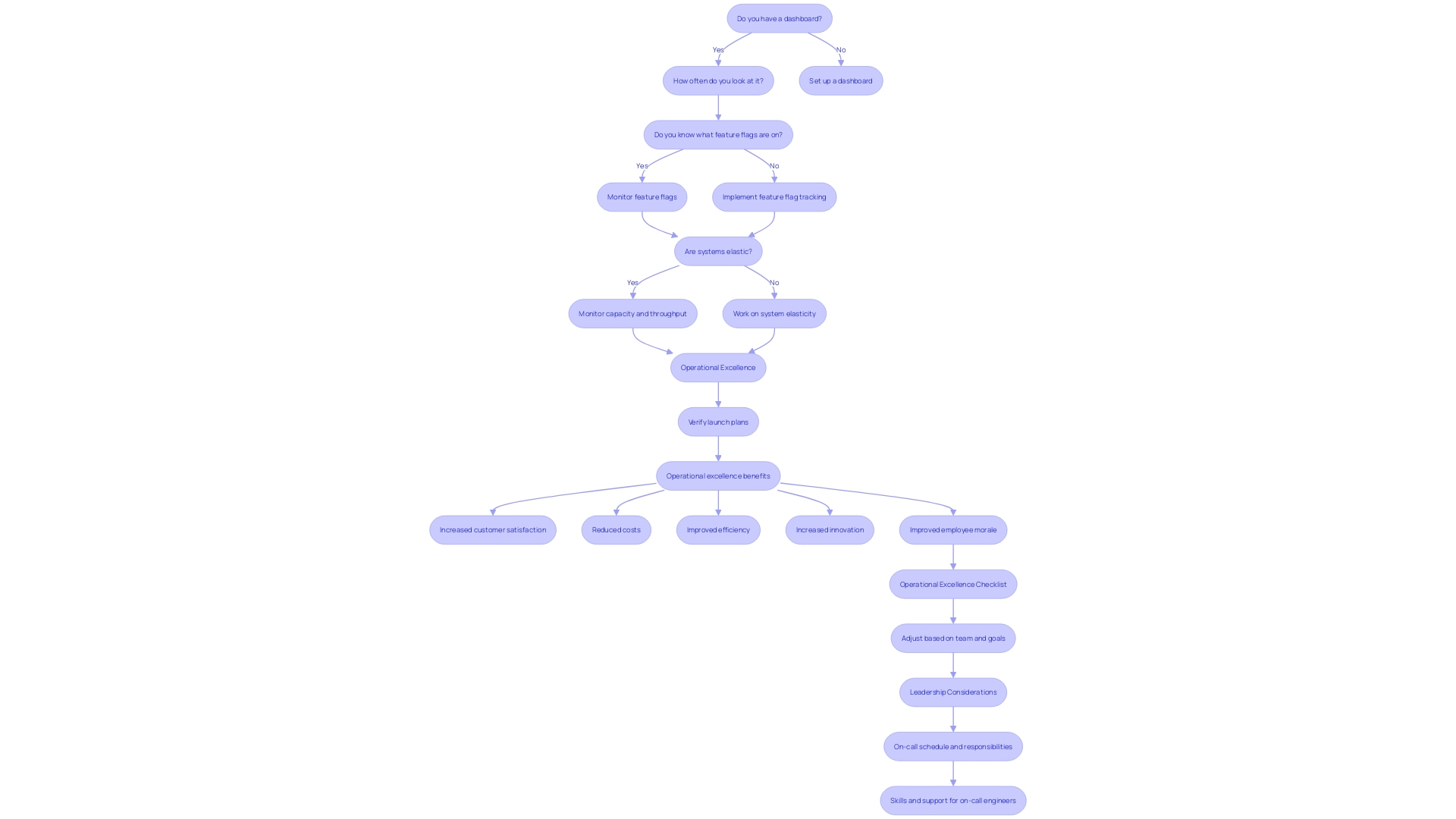
Maintain Documentation and Version Control
The importance of meticulously documenting automated workflows, configurations, and changes cannot be overstated. This practice is akin to maintaining a scientific lab notebook, which has been a cornerstone in experimental sciences for recording work and observations. An organized documentation process ensures that every aspect of the project remains transparent, making it easier for future updates and troubleshooting. It serves as a historical record, promoting accountability and aiding in the reliability of the work conducted.
For instance, Bosch's implementation of its solid oxide fuel cell (SOFC) system showcases the power of thorough documentation combined with digital twinning. This approach allows for visualization and optimization of process parameters throughout the system's lifecycle, ensuring high efficiency and sustainability in energy production.
In line with the best practices observed in rigorous scientific and academic environments, version control systems play a pivotal role in managing changes across all types of digital assets. As noted by Christopher Condo of Forrester Research, the surge in demand for software has directly impacted the need for robust version control. Platforms like GitHub are continuously evolving to accommodate the growing needs for agility, scalability, and performance, reinforcing the significance of version control in today's fast-paced development ecosystem.
Supported by such systems, individual researchers and engineers can organize their computational experiments effectively. This allows for an environment that fosters scientific rigor, mirroring the structured approach of a physical laboratory space. As the digital landscape grows, the ability to manage and track changes efficiently becomes a critical component of fostering productive, innovative, and reliable technological advancements.
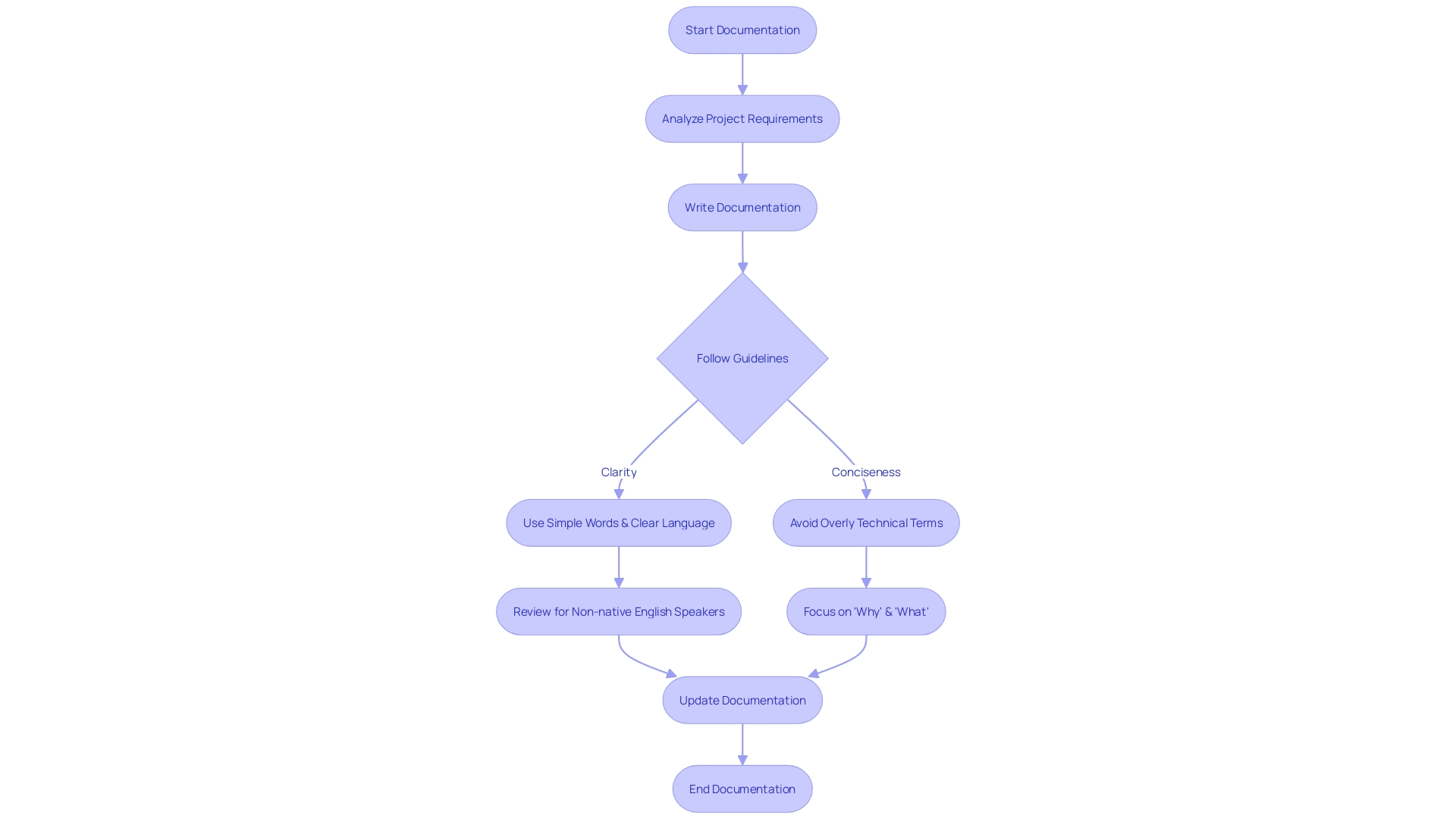
Continuous Improvement
To keep pace with the ever-changing business landscape and technological advancements, it's essential to regularly recalibrate and refine automated workflows. This proactive approach to workflow automation is exemplified by Bosch's implementation of the solid oxide fuel cell (SOFC) system. Bosch's SOFC, not only a marvel of engineering with its high electrical efficiency of 60 percent, but also benefits from a digital twin, enabling users to analyze and optimize its performance throughout its lifecycle. Similarly, TBC Bank's commitment to agility transformed their operations, reducing technical debt and enhancing their digital product delivery.
The agility of an organization's workflows is critical, and as the Zapier report indicated, nearly every worker in smaller businesses is engaged in repetitive tasks that can be automated, thereby improving job satisfaction and efficiency. The evolution of internal operations necessitates an approach that addresses the root causes of process obsolescence. By focusing on dynamic process transformation, organizations can maintain a competitive edge and adapt to the demands of the market and regulatory environment.
Supporting this, a recent report outlines four critical considerations for AI and automation, including data and preparedness, human talent alongside digital assistants, the IT opportunity, and investment priorities. This report also offers an 11-point action guide for optimizing intelligent automation. The benefits of becoming an AI 'power user'—those who are deeply familiar with AI, using it regularly at work—are significant, from managing workloads to spurring creativity and enjoyment in work.
As organizations continue to navigate the digital transformation journey, which involves digitization, digitalization, and ultimately digital transformation, the role of technology as the core of process execution cannot be overstated. This transformation enables organizations to harness data and digital technologies, creating additional value and fostering an environment of continuous improvement and innovation.
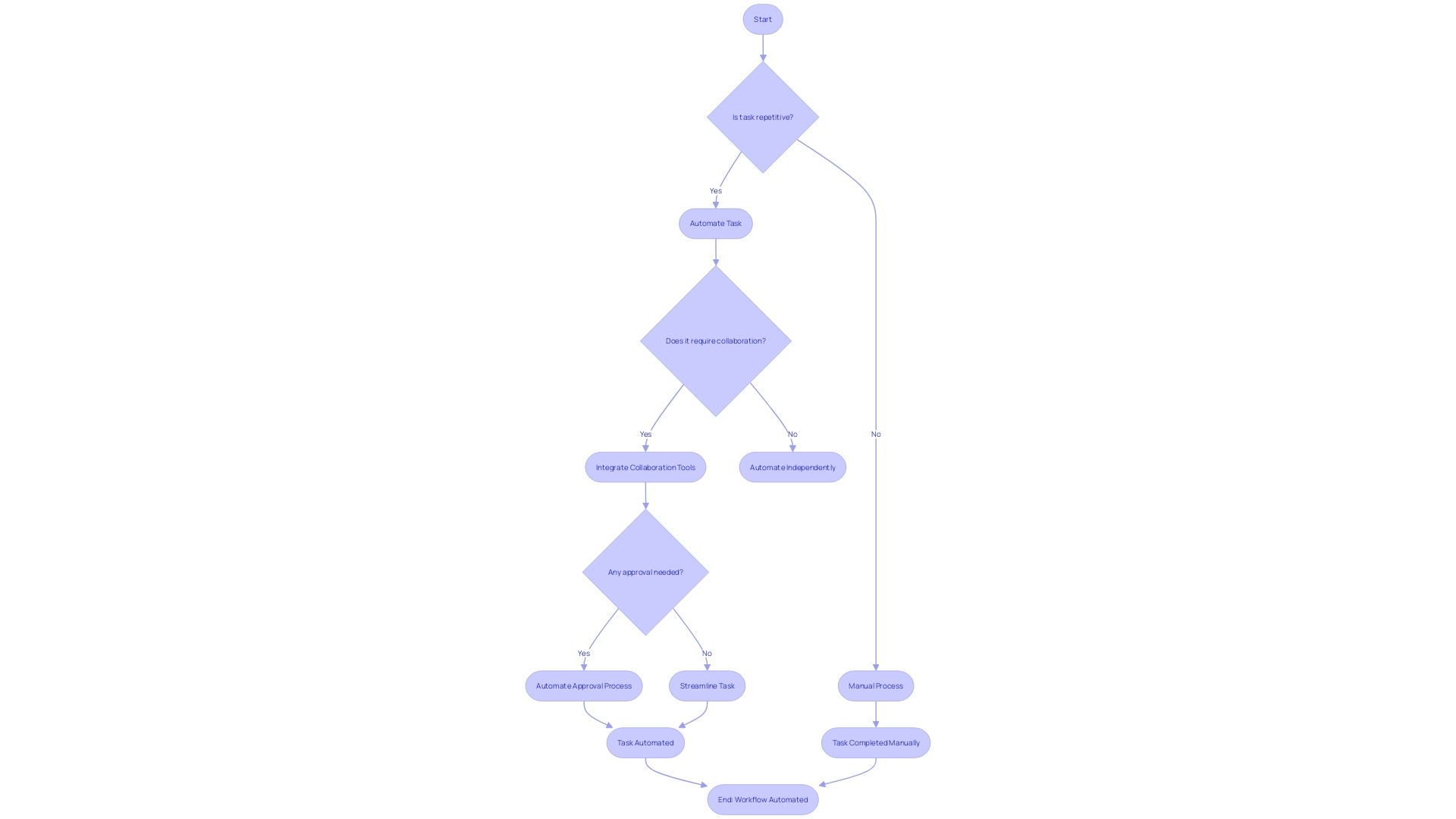
Common Challenges and Solutions
When venturing into the realm of cloud automation, organizations are bound to face a spectrum of challenges. A common hurdle is managing cloud costs effectively, as this often requires engineers to pause their primary tasks to analyze and address cost-saving recommendations. For instance, Quizlet, a global learning platform, navigated this challenge by deploying Harness Cloud Cost Management for its cost-saving automation capabilities. However, the company realized that additional cost-saving opportunities were not being leveraged. To resolve this, they crafted an automated workflow that streamlined the process of creating pull requests for cost-saving recommendations, thereby empowering their engineers to focus on cloud services with minimal distraction.
Moreover, companies like IFCO Systems benefited from partnering with Rackspace Technology. By tapping into Rackspace's expertise, IFCO, despite having a small IT department, was able to make a foray into cloud services with confidence. The partnership highlighted the significance of leveraging external experience and a customer-centric approach to overcome the initial challenges of cloud adoption.
Despite these success stories, a report from TechRepublic reveals that enterprise-wide automation varies across organizations, and surprisingly, a quarter of the respondents admitted to lacking an automation strategy. Barriers such as skills deficits (29%), technological constraints (28%), and cybersecurity concerns (28%) were identified as impediments to achieving IT automation. Nevertheless, the benefits of automation, including improved customer experience, increased revenue, and enhanced team productivity, cannot be overlooked.
To address these challenges, it's imperative for organizations to adopt a comprehensive strategy that aligns with their specific needs and goals. The evolution of DevOps has brought about a suite of automation tools that optimize the software development lifecycle, enabling faster delivery and accuracy, which corresponds to business objectives. These tools encompass continuous integration, continuous delivery, infrastructure as code, configuration management, monitoring, and logging. By integrating these practices, businesses can reduce overhead and expedite their market presence.
As we delve deeper into the era of AI and automation, understanding the intricate relationship between technology and the changing nature of work becomes crucial. The amalgamation of AI with automation promises to enhance creativity and productivity while posing challenges such as employment displacement and ethical dilemmas. It's a transformative period where the benefits of automation, like efficiency and cost reduction, are juxtaposed with the potential for job losses in areas susceptible to automation, such as manufacturing and administrative tasks.
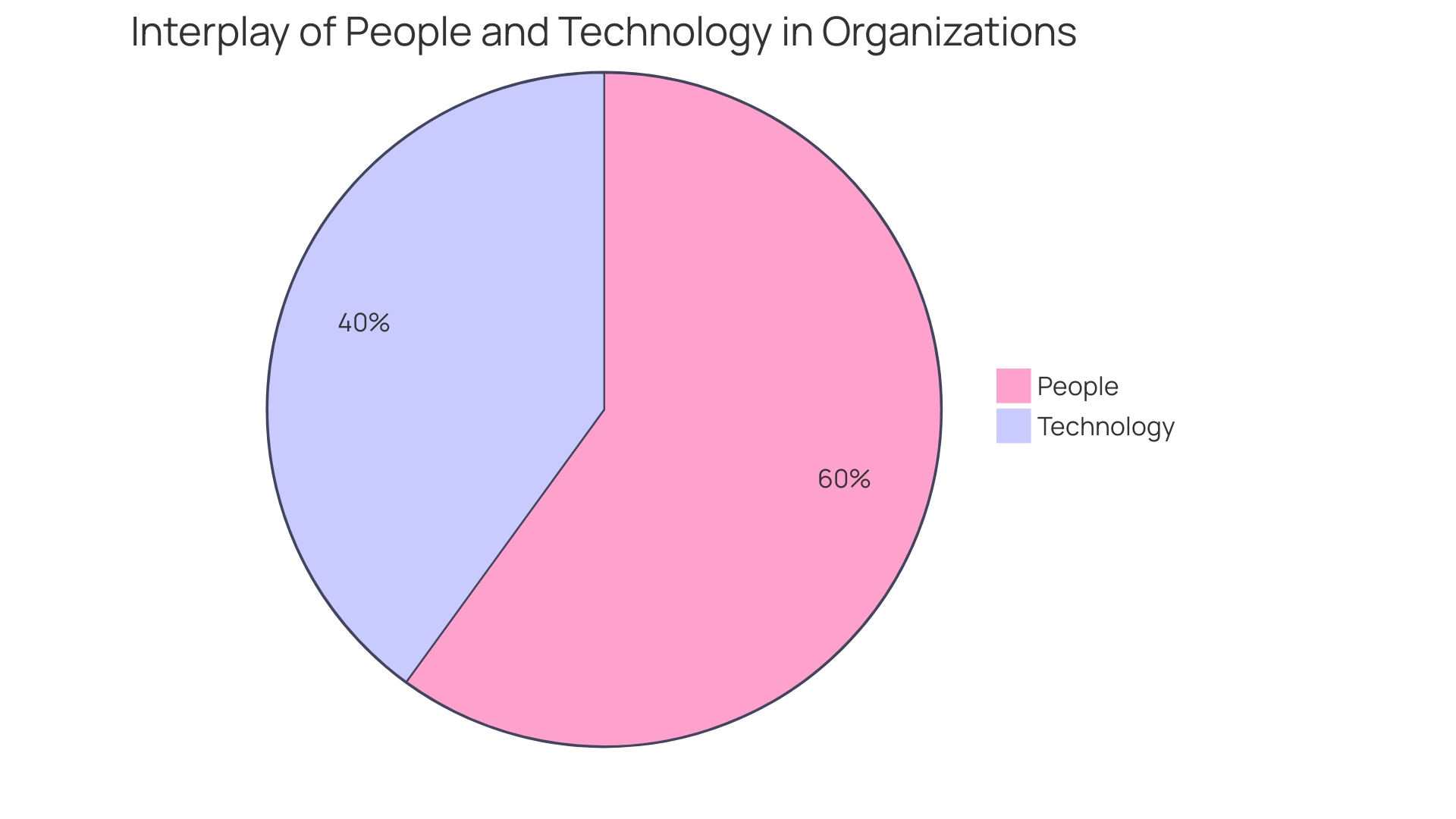
Resistance to Change
The incorporation of automation into business operations is a significant step towards enhancing efficiency and productivity. However, it often encounters resistance from those accustomed to traditional methods. To address these concerns, it is essential to foster an environment of clear communication, demonstrating the tangible benefits automation brings to the workforce. For example, Millennium Recycling, a leader in material recovery, has embraced emerging technologies to maintain its competitive edge, which can serve as an inspiration for others in the industry. Similarly, St. James Winery's commitment to innovation has made it a top-performing winery, showcasing the rewards of adopting automation.
Reflecting on broader industry trends, a McKinsey study indicates a surge in automation investment, with over 25% of capital allocated to automation solutions in the near future. Despite this, small and medium-sized enterprises (SMEs) show reluctance, often due to misconceptions about automation's role and impact. It is crucial to debunk these myths and present automation as an opportunity for growth and not a burden.
Moreover, the International Federation of Robotics reports that the deployment of industrial robots in manufacturing has reached approximately 3.5 million units globally, valued at $15.7 billion, especially in the automotive and electronics sectors. The service industry too is experiencing a boom in automation, highlighted by the widespread use of chatbots, virtual assistants, and IoT devices, all of which underscore the profound transformation that automation is driving across various sectors.
In the words of an industry expert, "In a world of bits, we don't have to worry about space or cost constraints — code doesn't take up any space, and cost is usually not a concern." This statement reflects the limitless potential of automation, which is unencumbered by the physical limitations of traditional manufacturing and management processes. It is essential to question every requirement and understand the underlying needs to fully leverage the benefits of automation technologies.
Training and support play a pivotal role in easing the transition to automated systems, ensuring that employees are equipped to adapt to new workflows and technologies. By investing in the professional growth of their teams, organizations can nurture a workforce that is both proficient in automation technologies and enthusiastic about the improvements they bring to their roles. As the industry continues to evolve, staying informed through resources like Automation.com can help businesses stay abreast of the latest developments and best practices in automation.
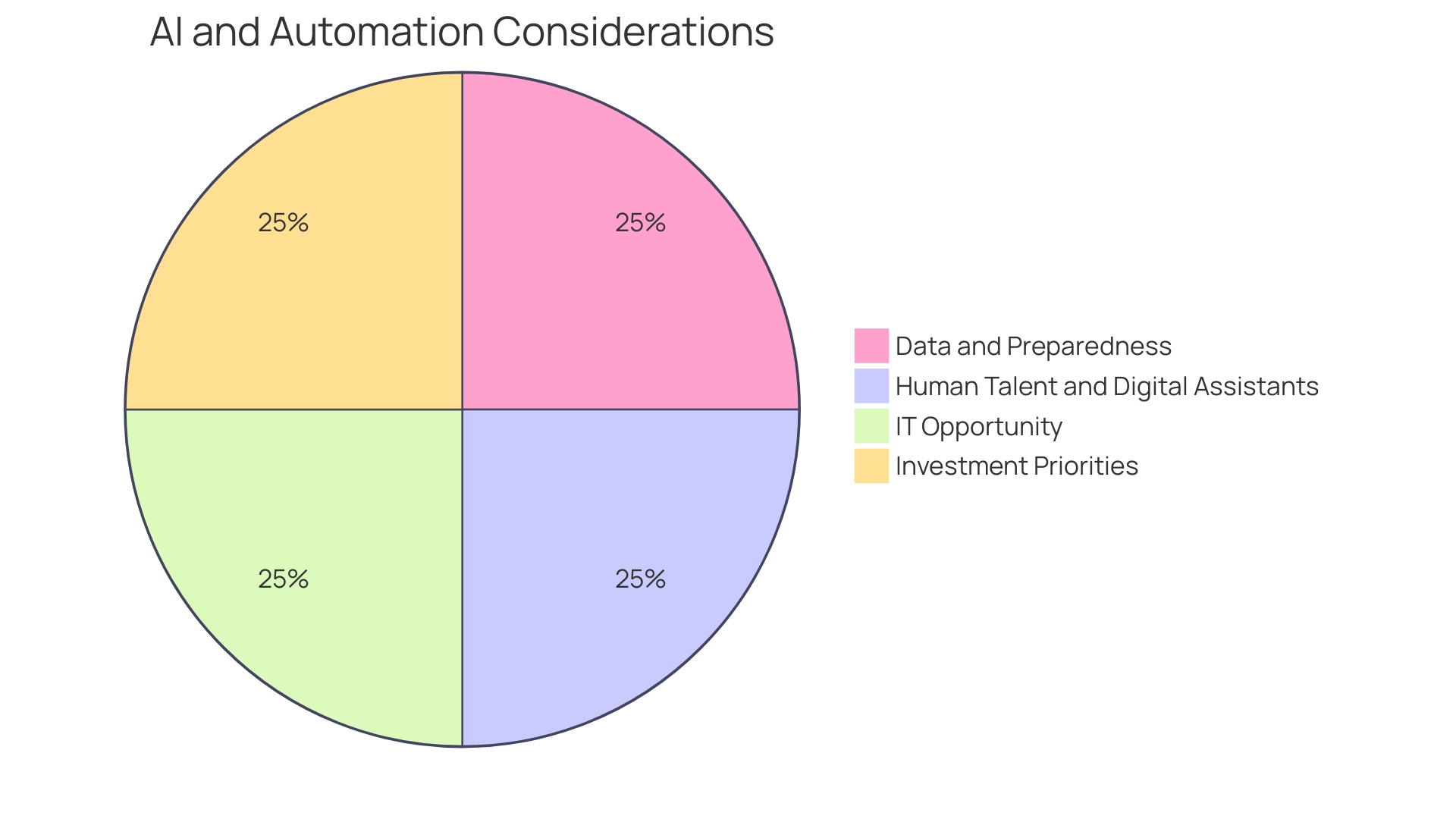
Integration Complexity
The complexity of integrating automation tools with established systems and operations requires a meticulous approach. Guide Engineering's history of innovation in high-end automation and assembly equipment demonstrates the importance of a robust foundation when incorporating new technologies. Similarly, St. James Winery's success in leveraging automation for quality control underscores the potential efficiency gains when integration is handled effectively. As we enter the era of Industry 5.0, which emphasizes user-friendliness and sustainability, it is clear that a seamless integration of automation tools is not just desirable but essential for staying competitive.
Despite the challenges, recent case studies and industry reports show that with careful planning and the right expertise, successful integration can lead to substantial improvements in operational efficiency. For instance, the State of the Automation Professional Report reveals an optimistic outlook among automation professionals, indicating a positive impact on job satisfaction and career development opportunities. Furthermore, the advent of Industry 5.0 presents a fresh perspective on the integration of automation, focusing on enhancing accessibility and sustainability while maintaining user-centric design.
To ensure that the integration of automation tools into existing systems and processes is seamless, organizations must thoroughly assess their integration requirements. This may involve addressing data challenges, as accessing sufficient and relevant data is a common hurdle. Techniques such as data augmentation and synthetic data generation, as well as collaborations and data-sharing initiatives, can be instrumental in overcoming these obstacles. An action guide with an 11-point blueprint from the AI and Automation report provides a strategic framework for optimizing intelligent automation, underscoring the need for expert guidance to navigate the complexities of integration.
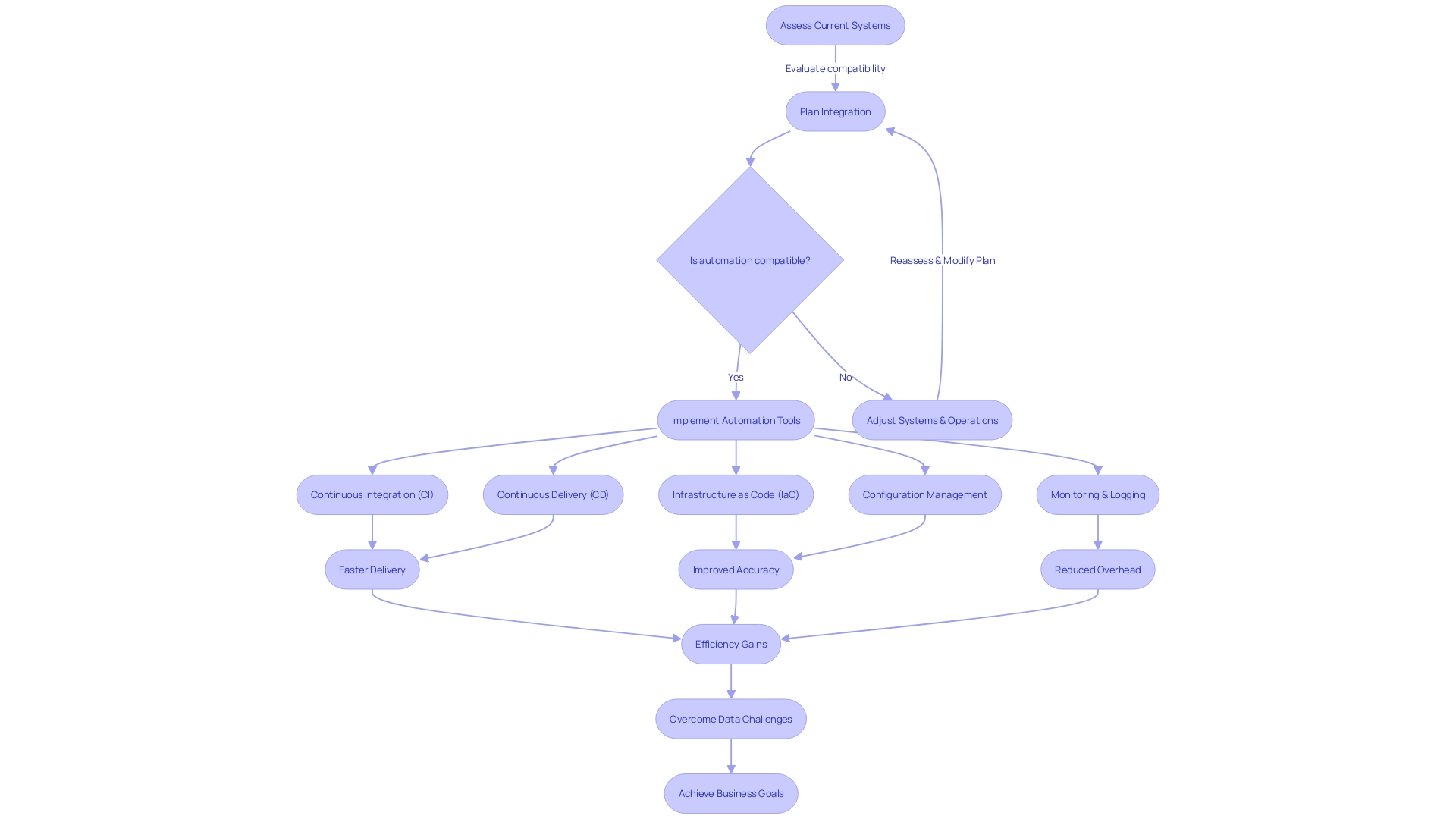
Security and Compliance Risks
To ensure cloud automation and orchestration bolster an organization's agile transformation while maintaining security and compliance, a comprehensive approach is essential. It's important to evaluate existing workflows and identify those that are repetitive, time-consuming, and suitable for automation. The process should be well-defined and translatable into an algorithm, with results that are verifiable by human oversight. By consolidating steps in routine tasks, organizations can streamline operations and reap the benefits of efficiency while also reducing potential risks.
In the healthcare sector, for example, experts like Janette Evans emphasize the significance of harnessing data to enhance security and compliance. Similarly, in the insurance industry, companies like Hiscox have experienced the tangible benefits of automation, achieving a 28% reduction in repetitive workload and improving response times, which is essential for customer satisfaction and service excellence. This illustrates the potential efficiency gains through strategic automation.
Moreover, with data privacy regulations growing more stringent and penalties for non-compliance increasing, as seen with TikTok's GDPR fine and Sephora's CCPA settlement, it's evident that automation can play a crucial role in managing compliance risks. Workflow automation tools can help organizations keep up with regulatory demands and avoid costly violations.
Ultimately, security and compliance are not just about technology but also about fairness and transparency. The principles outlined in GDPR's Article 5 and the EDPS guidelines can serve as a framework for assessing security processes and ensuring they are fair and non-discriminatory. By integrating these principles into the automation strategy, organizations can mitigate risks and ensure they are not only efficient but also compliant with industry standards and regulations.

Future of Automation for Cloud Computing and Its Impact on Business
Cloud automation and orchestration strategies are transforming the way businesses operate, offering the potential to significantly enhance IT productivity, drive business innovation, and harness advanced technologies. With the rise of generative AI, organizations have an opportunity to further expand the value derived from cloud adoption, tailoring cloud programs to address specific industry needs and geographic considerations. However, achieving a comprehensive ROI from cloud investments requires a strategic approach, balancing the expected benefits against the costs involved.
Organizations that have successfully navigated the cloud landscape report substantial operational efficiencies. For instance, AI-driven automation has been instrumental in producing goods and delivering services, with early adopters already witnessing enhancements in customer service through chatbots and predictive analytics in sectors like healthcare. Yet, despite the clear advantages, some companies face challenges in reaching enterprise-wide IT automation. Common obstacles include a lack of necessary skills, limitations within the organization's technology stack, and cybersecurity concerns.
The differing priorities and capabilities of each organization mean that automation is not a one-size-fits-all solution. Instead, it is crucial to identify and automate the most valuable processes to gain the most significant benefits, such as better customer experiences, increased revenue, and improved team productivity. As IT operations increasingly become the hub of innovation within organizations, automation stands as a key driver, enabling teams to effectively manage growing technical complexity and deliver consistent quality and cost efficiencies.
To fully capitalize on cloud automation, businesses should consider adopting a cloud-native approach, which offers cost savings, flexibility, scalability, and enhanced security. Moreover, it's essential to have a clear understanding of where data resides within the organization to facilitate successful migration to the cloud. With the right strategies in place, companies can optimize intelligent automation, as outlined in an 11-point action guide provided in recent industry reports, which addresses critical areas such as data preparedness, human talent, the IT opportunity, and investment priorities.
Conclusion
Cloud automation is transforming the way organizations operate, offering improved efficiency, scalability, cost reduction, reliability, and security. By automating routine tasks in cloud environments, companies can boost productivity, drive innovation, and leverage advanced technologies like generative AI.
Implementing automation for cloud computing requires careful planning, selecting the right tools and technologies, and addressing challenges such as integration complexity and resistance to change. Maintaining documentation and version control is crucial for transparency and accountability, while continuous improvement ensures organizations stay agile and innovative.
Security and compliance risks must be addressed through careful evaluation of existing workflows and alignment with regulations. Automation can enhance security protocols and ensure compliance with industry standards.
Looking ahead, automation will continue to play a crucial role in driving IT productivity, business innovation, and the adoption of advanced technologies. As organizations embrace cloud technologies and advance in their digital transformation journeys, automation will be instrumental in maintaining a competitive edge.
By embracing automation and leveraging the right tools and strategies, organizations can navigate the landscape of digital transformation with confidence and drive their agile transformation efforts. Cloud automation offers tremendous potential for organizations to streamline operations, optimize resources, and achieve significant improvements across various areas. With the right approach, organizations can maximize their return on investment in cloud technologies and position themselves as leaders in the digital landscape.




